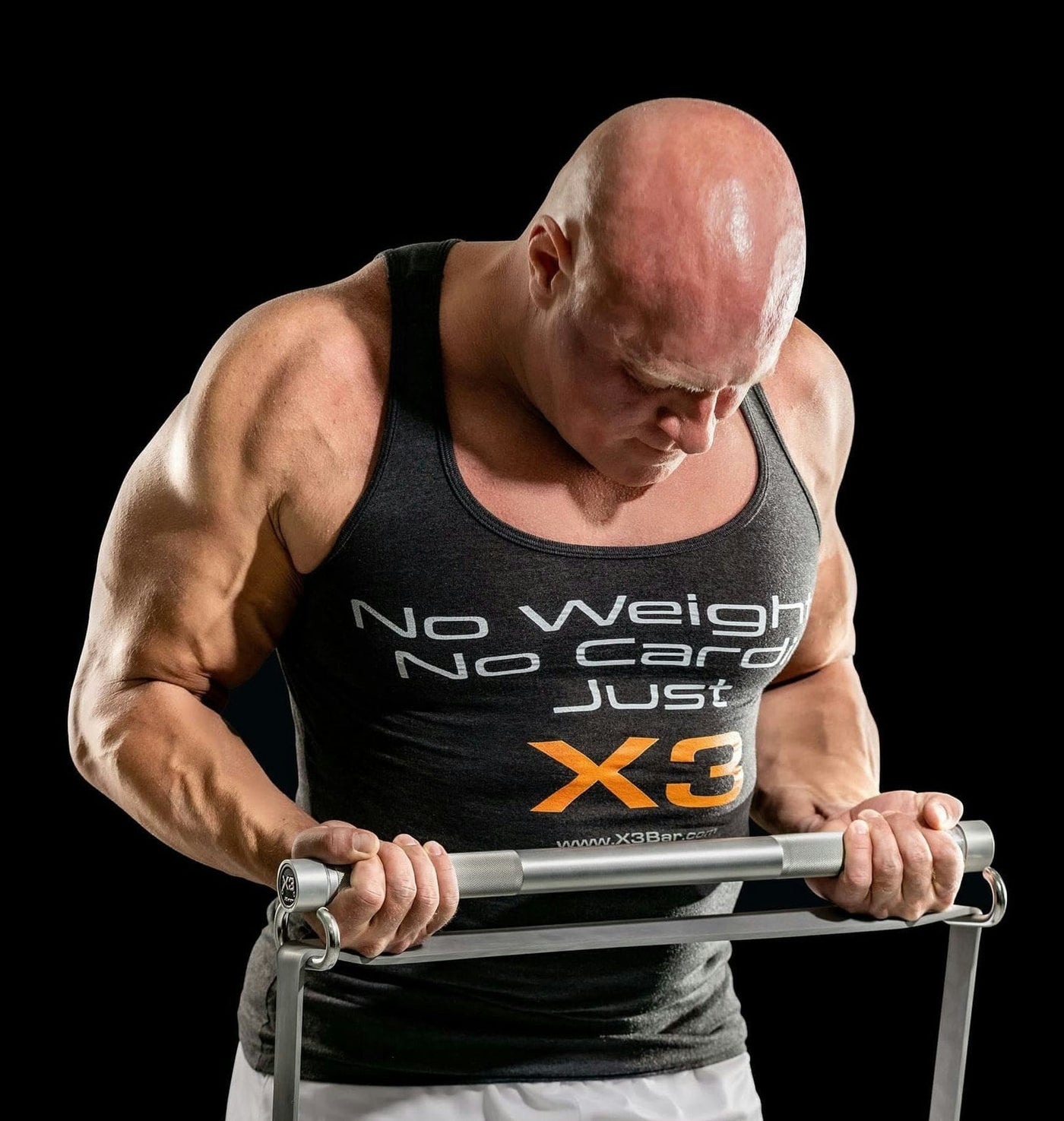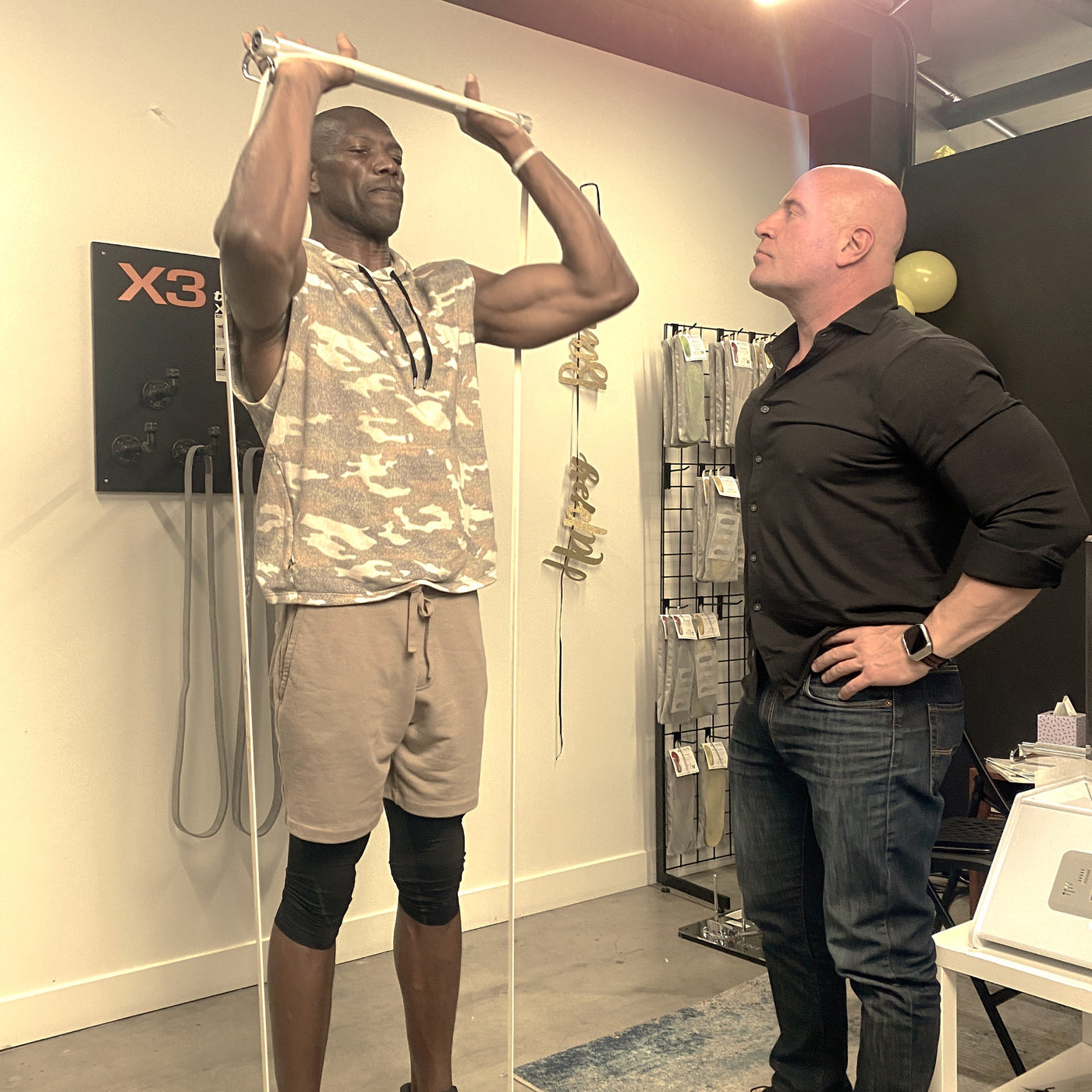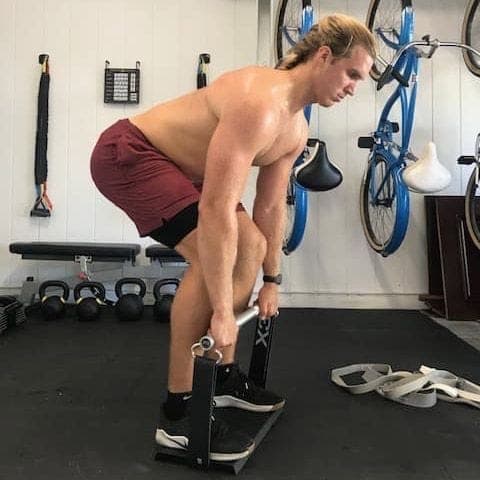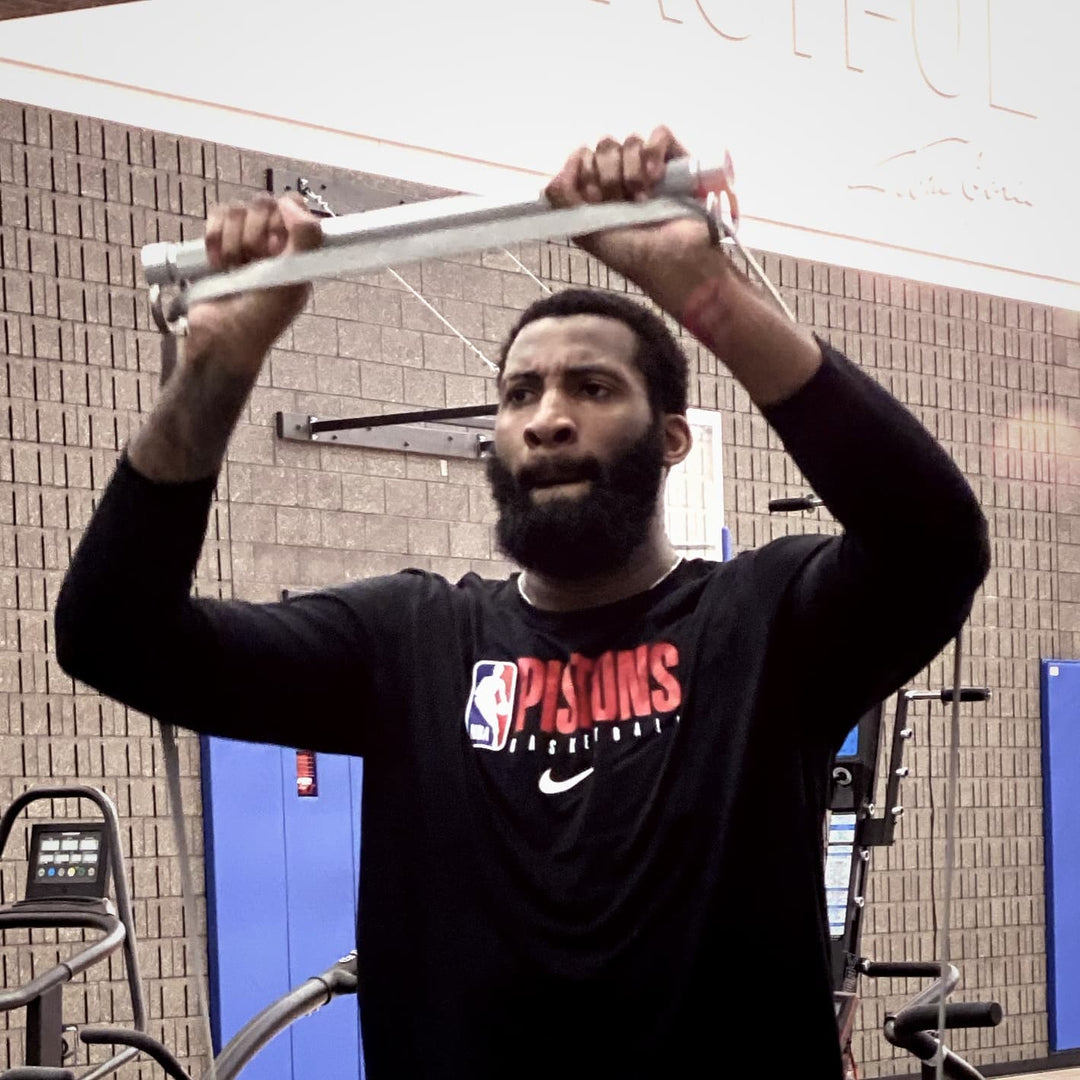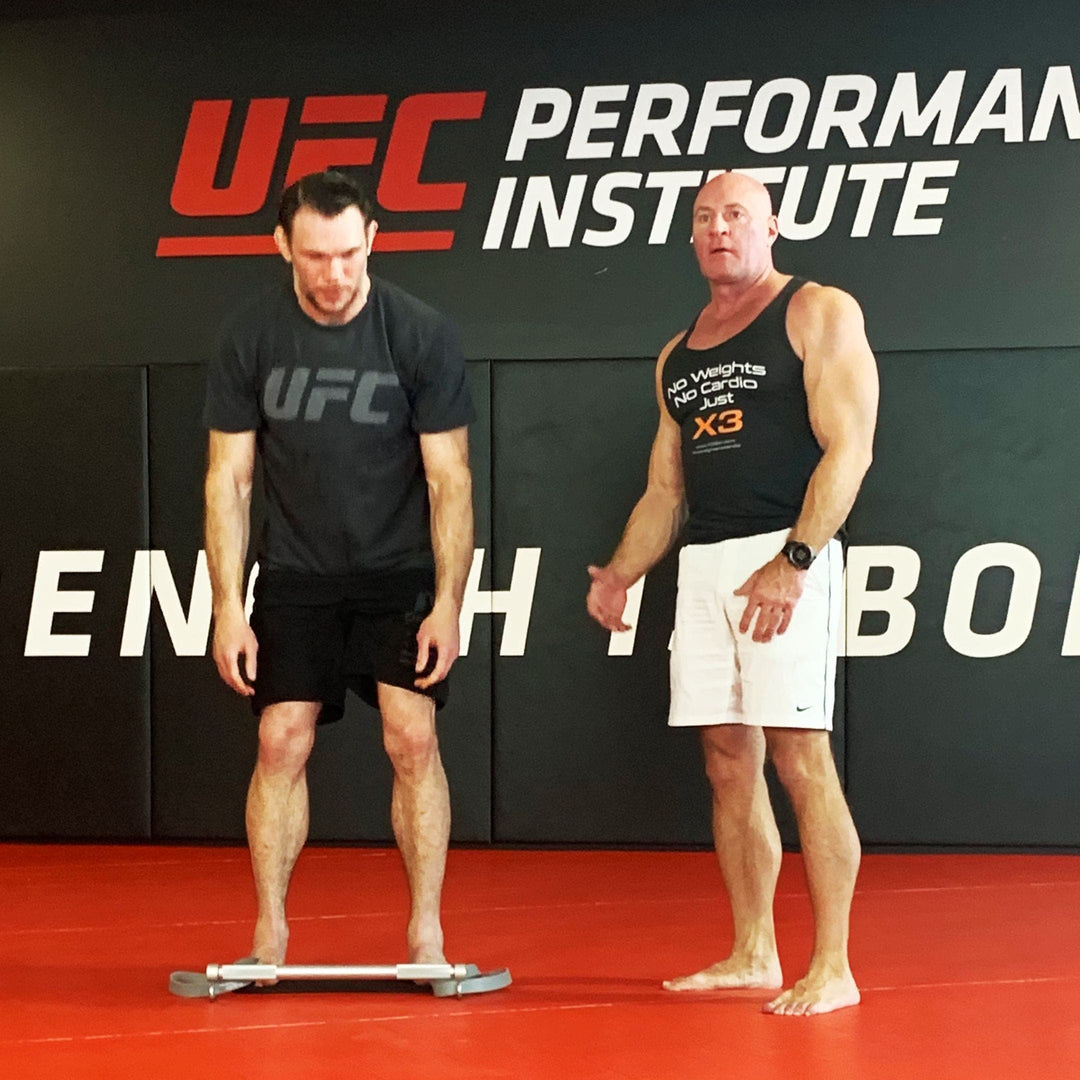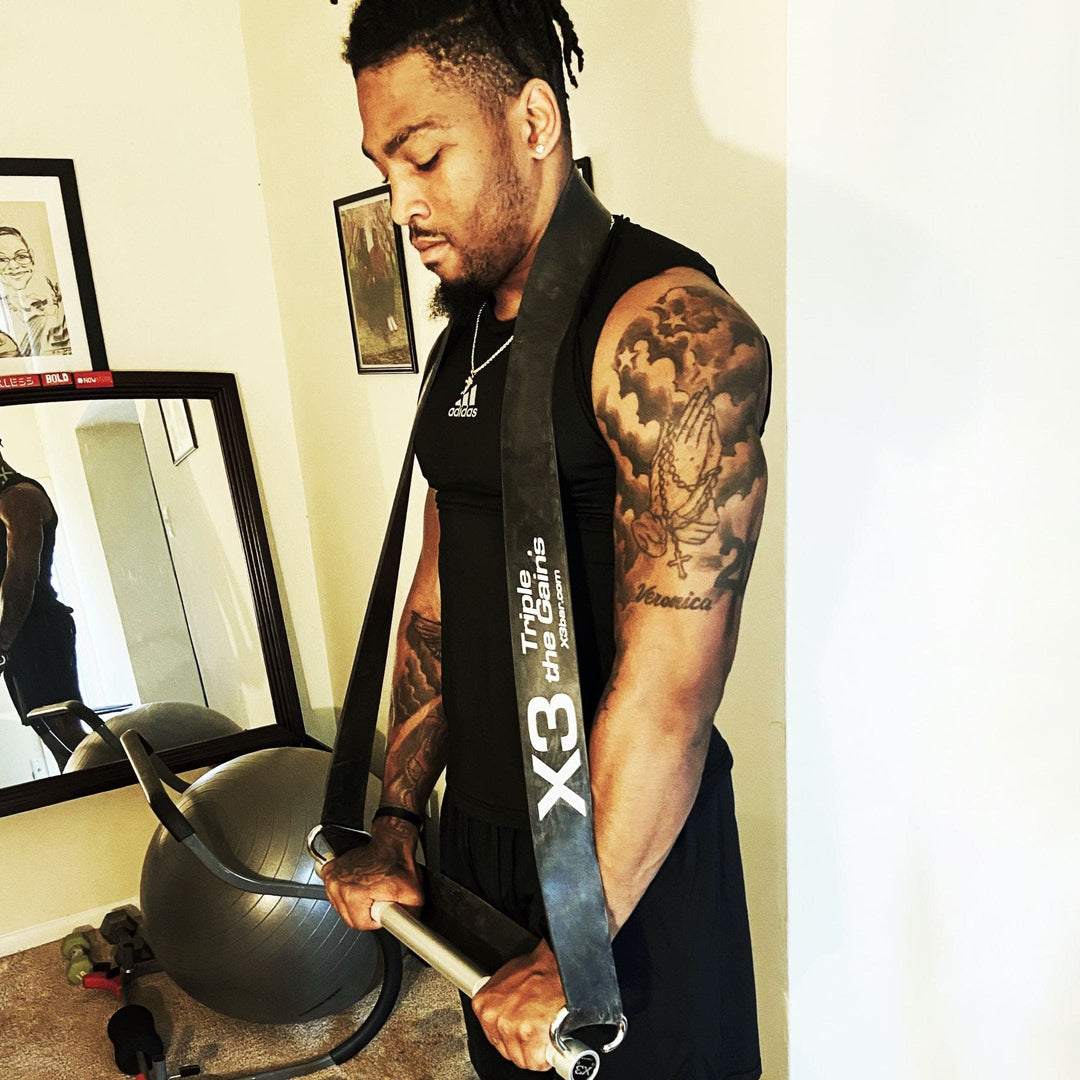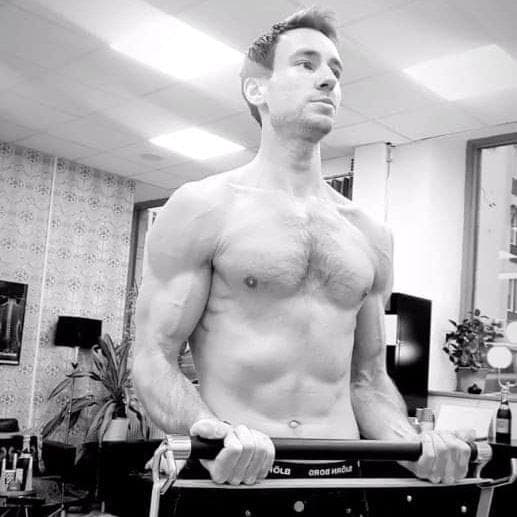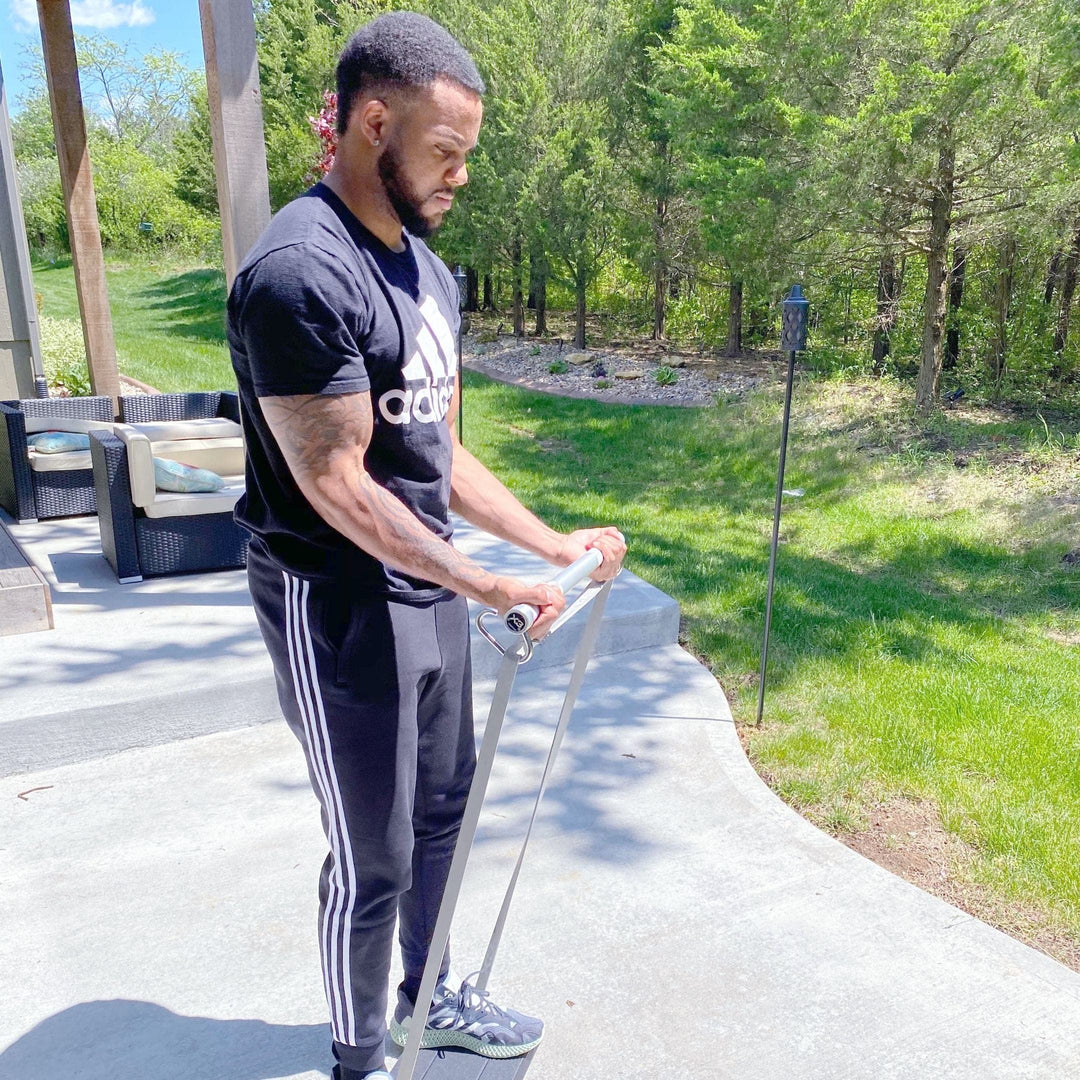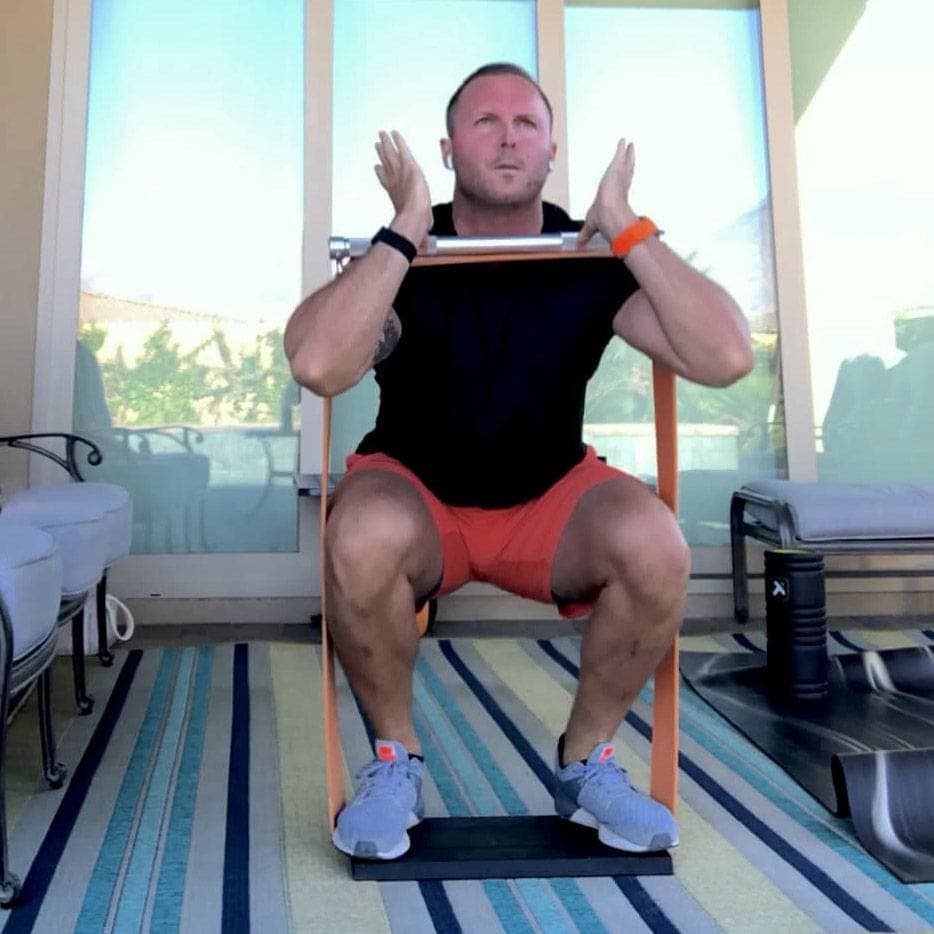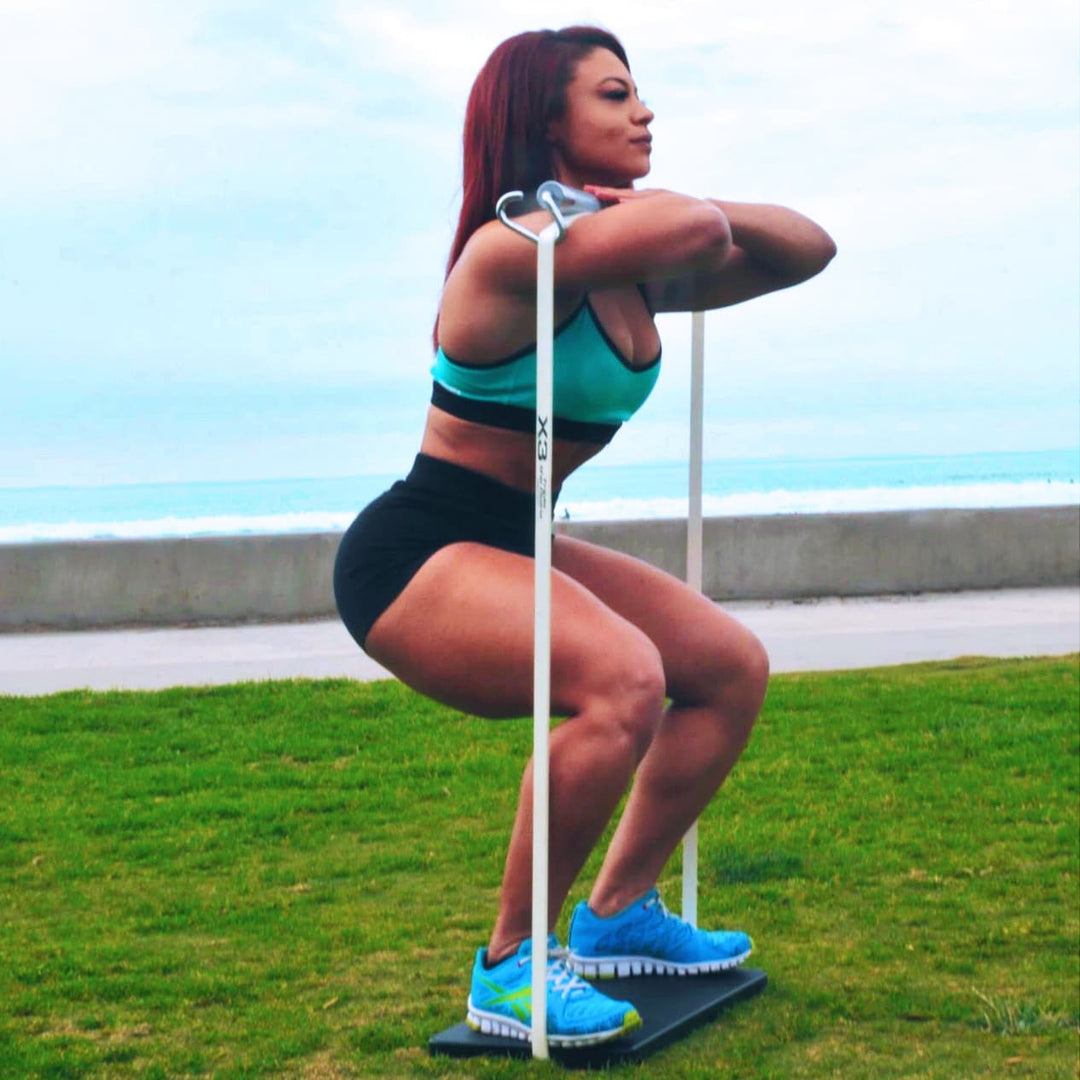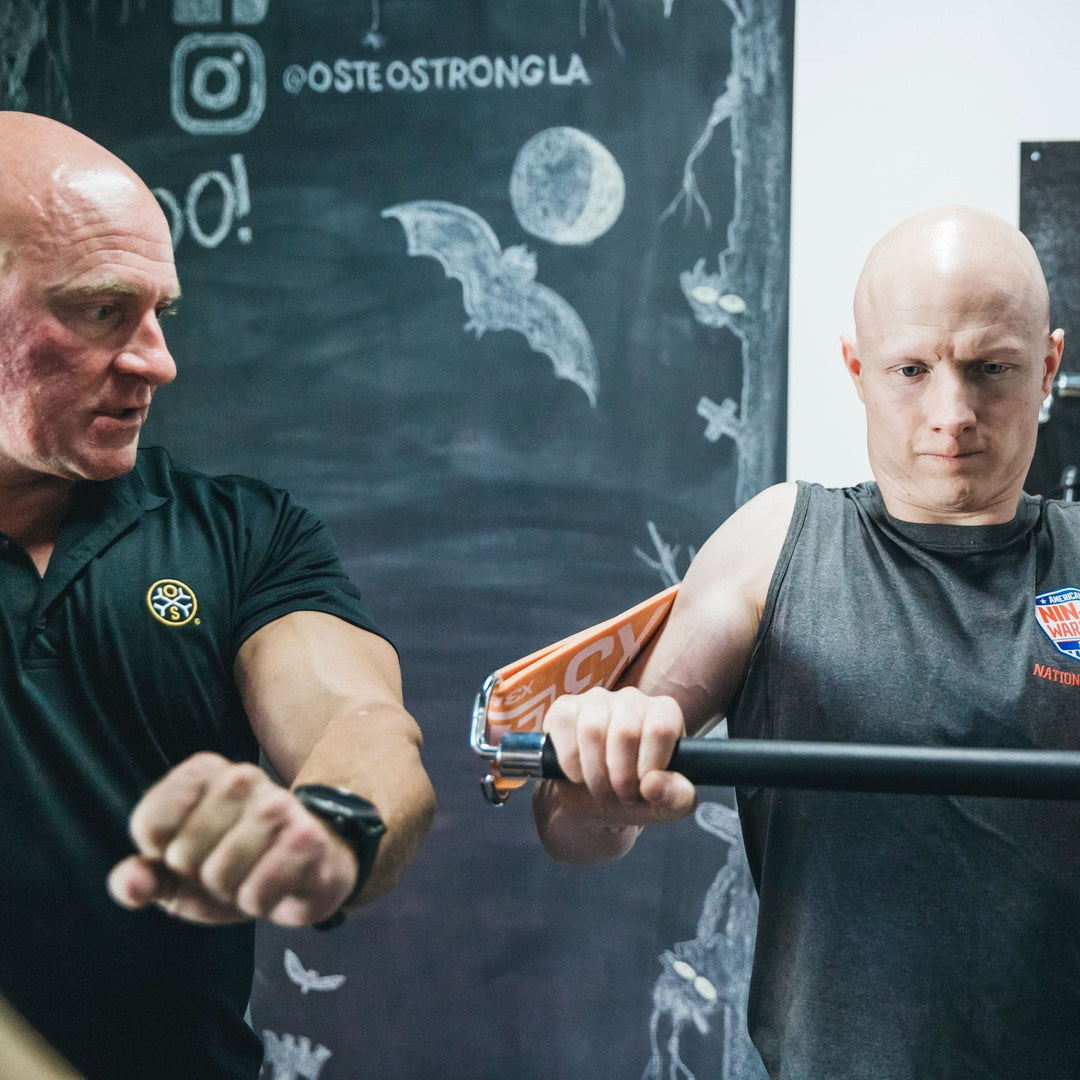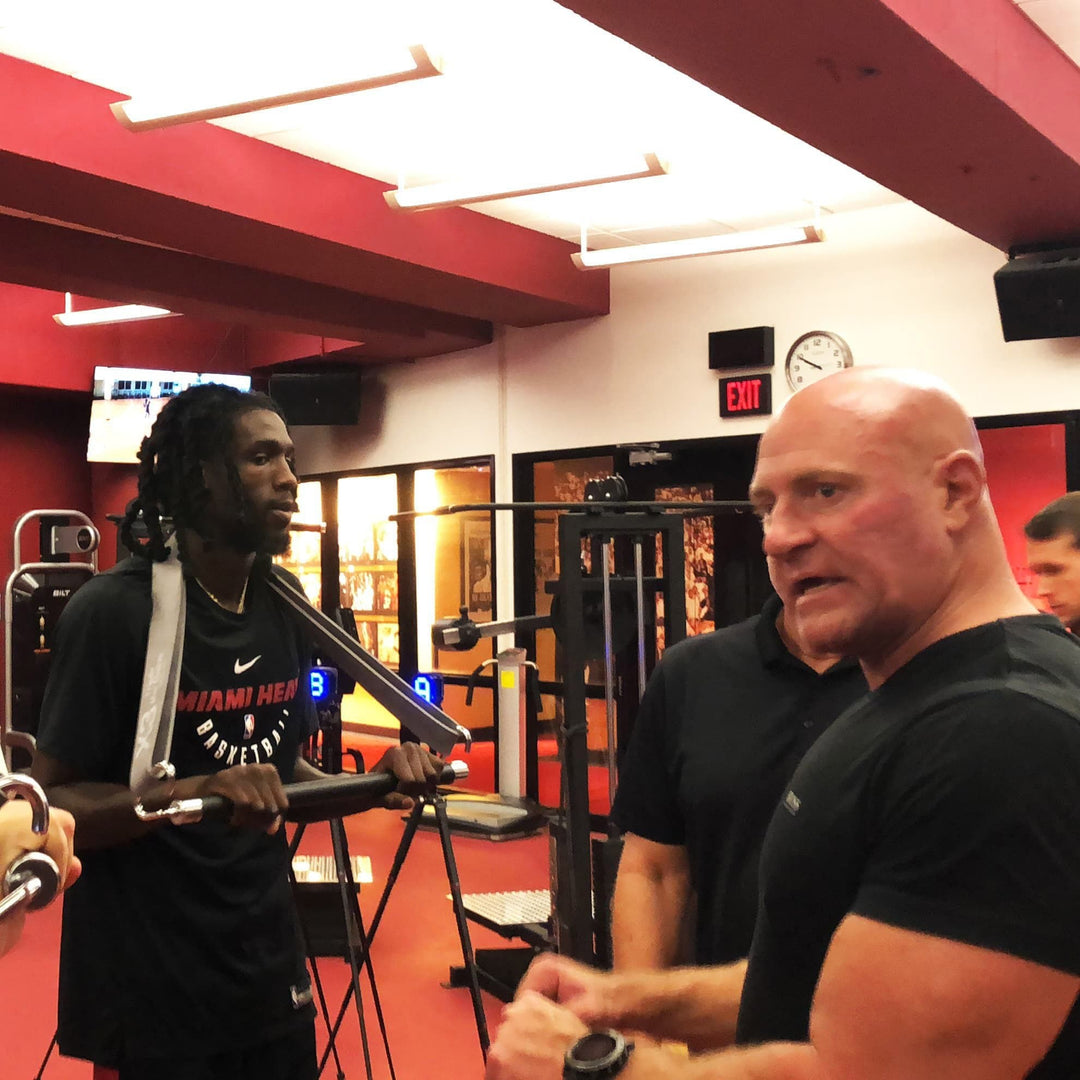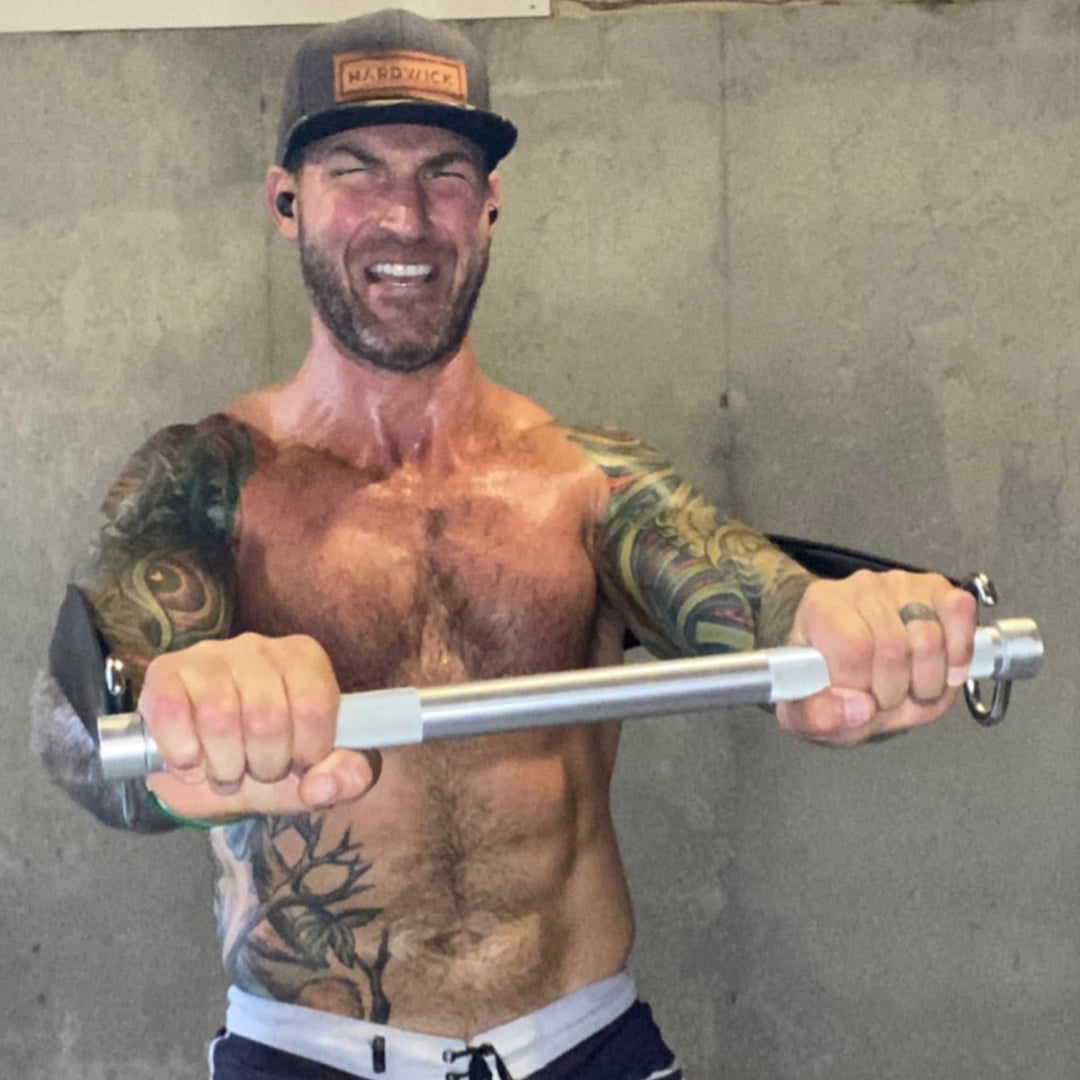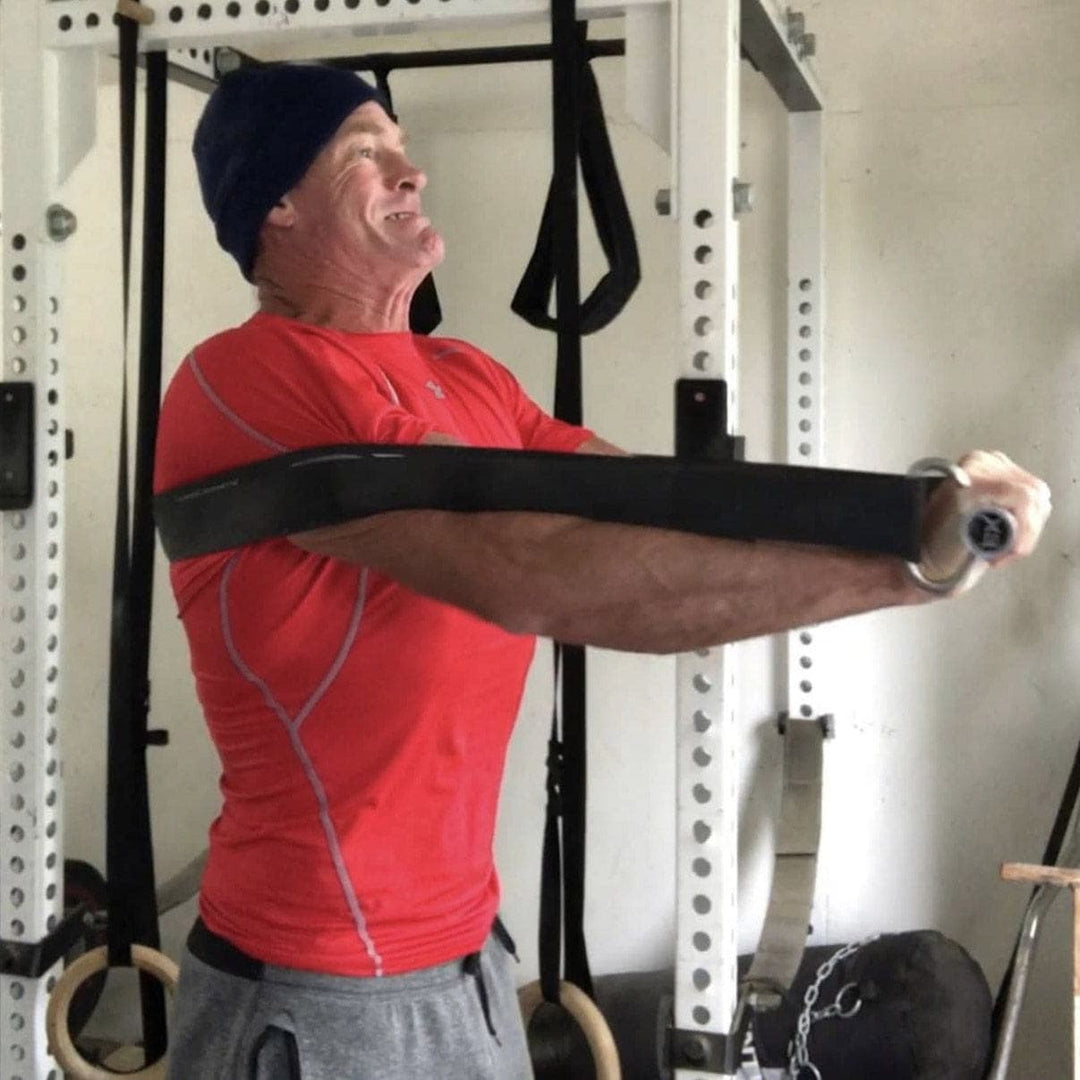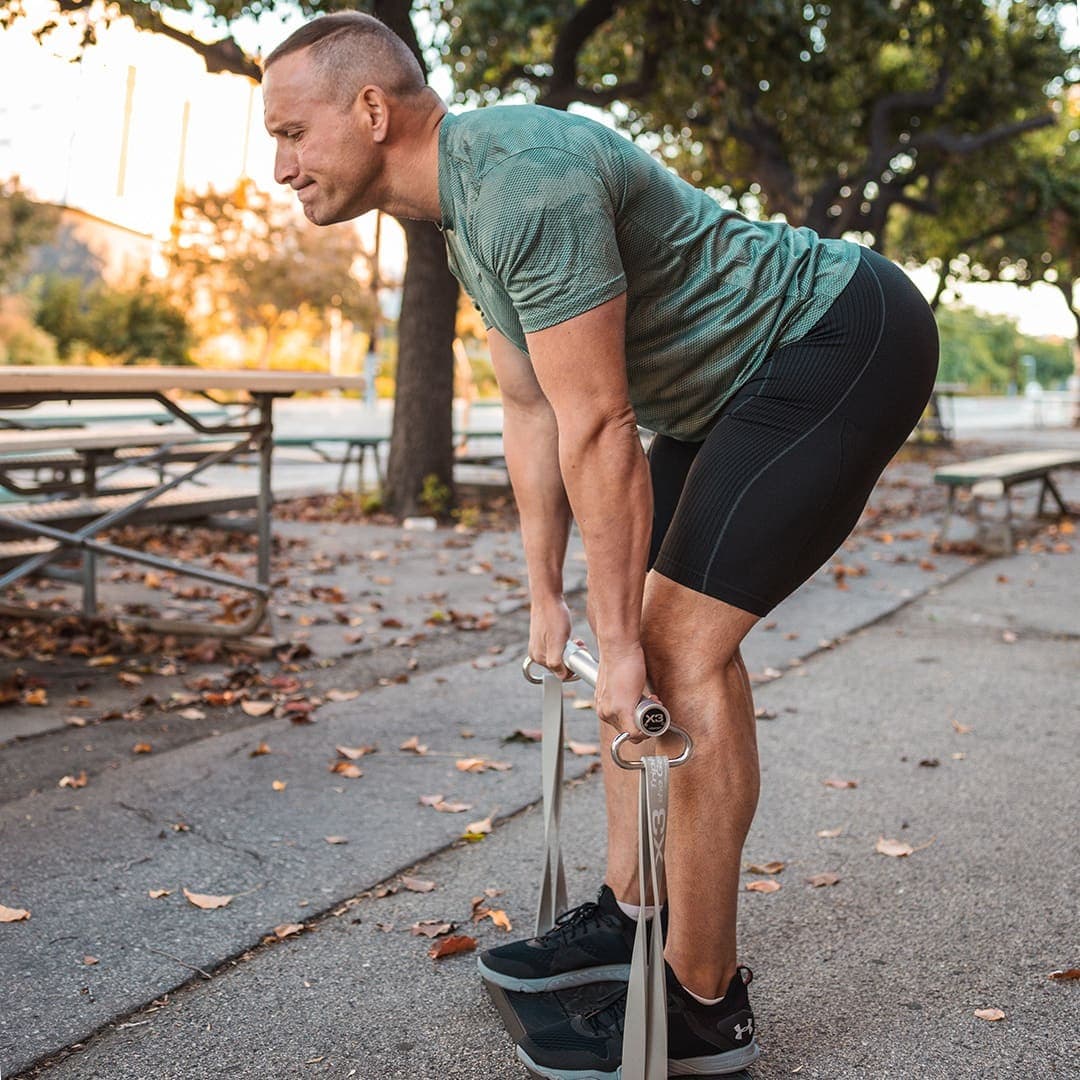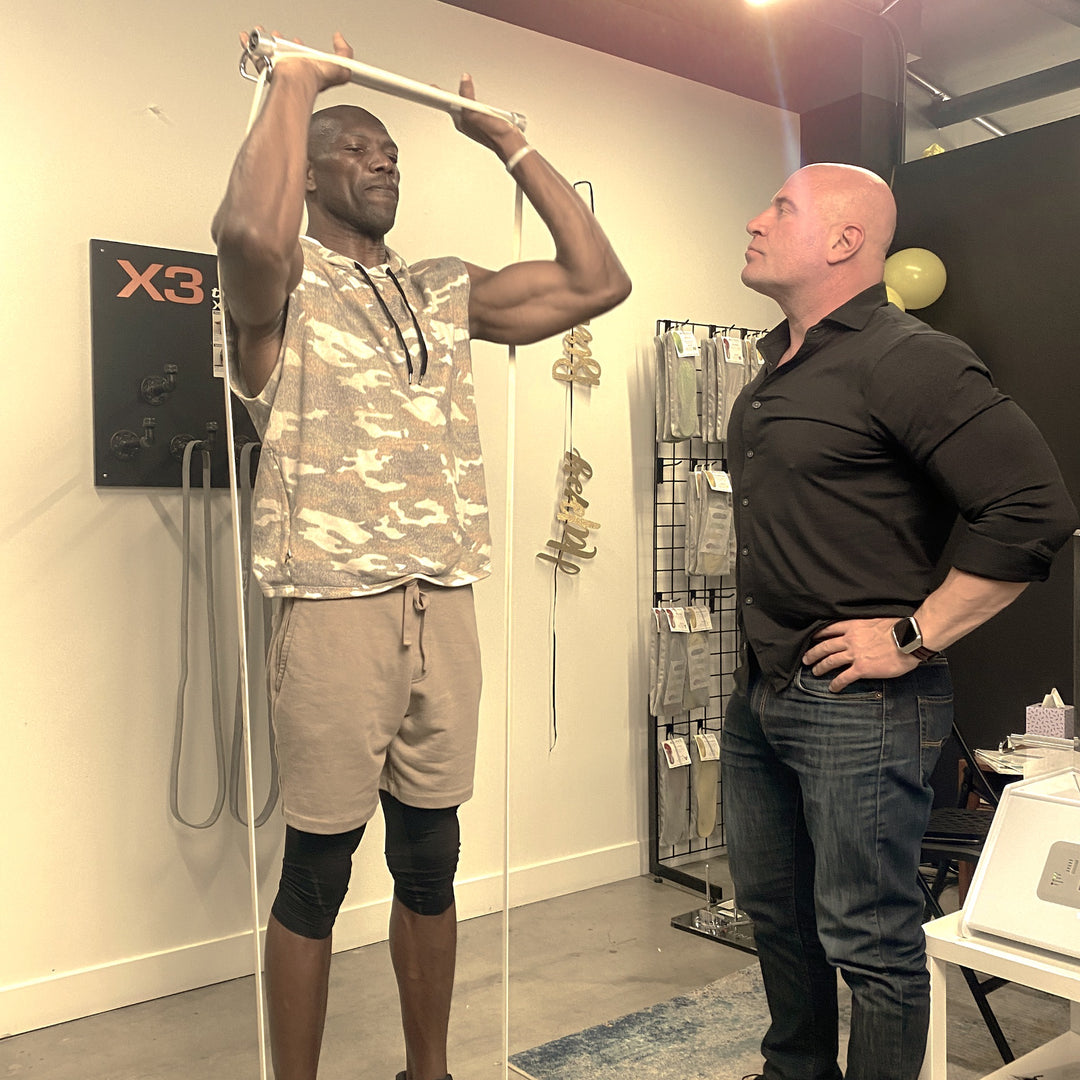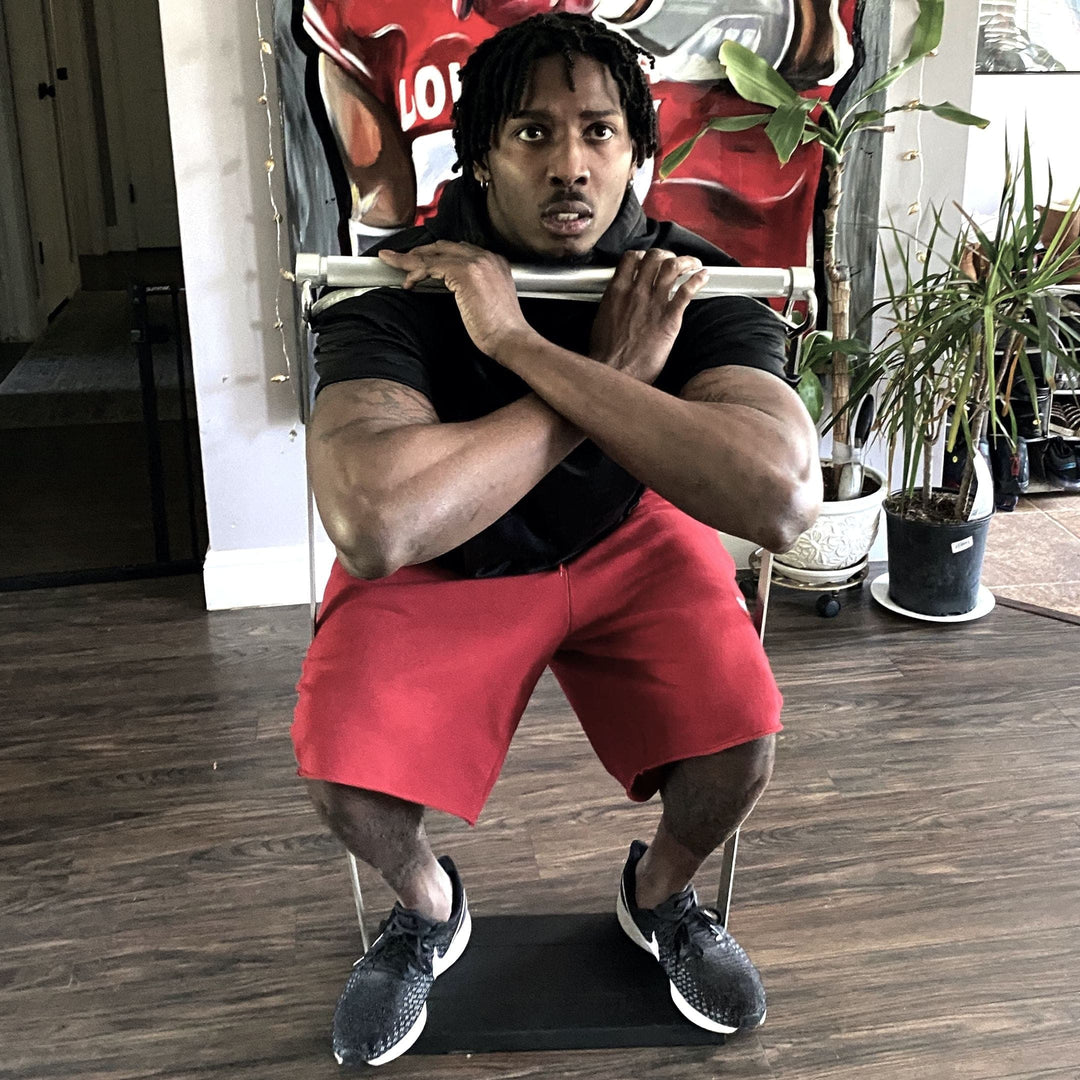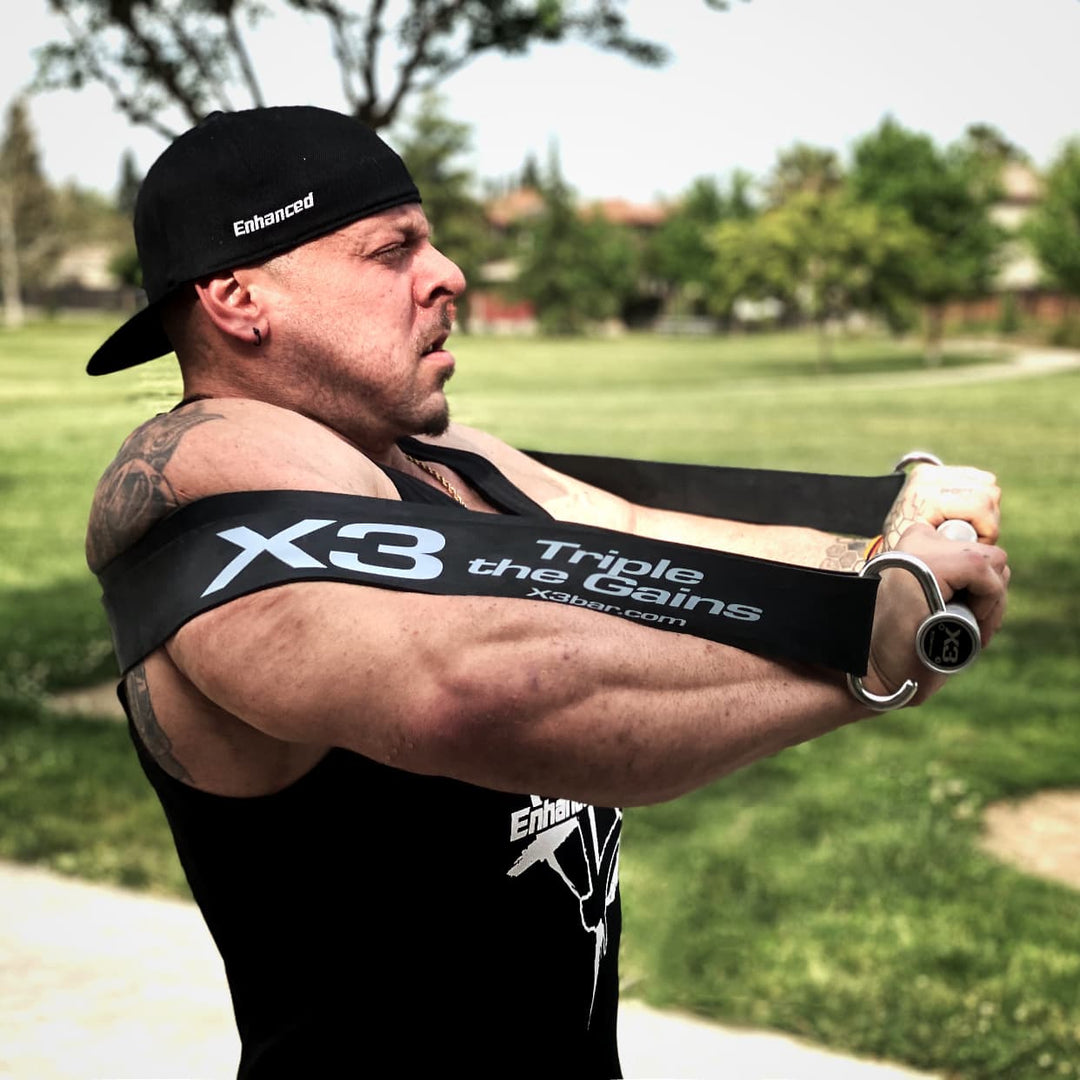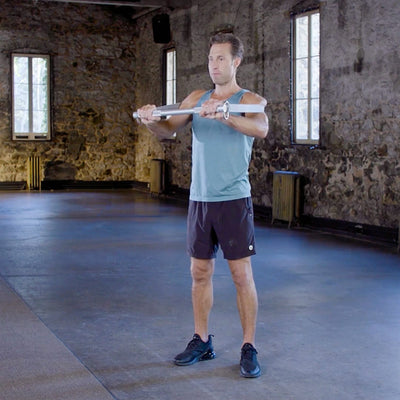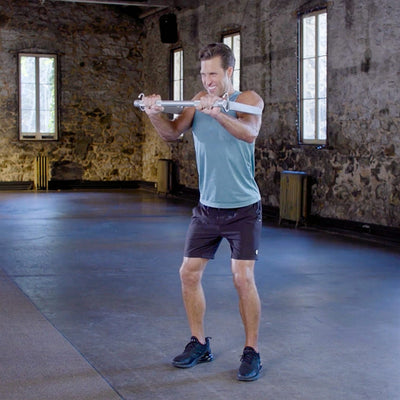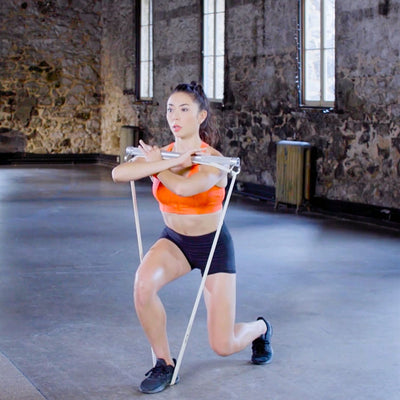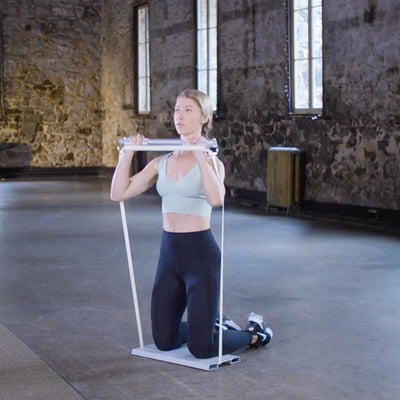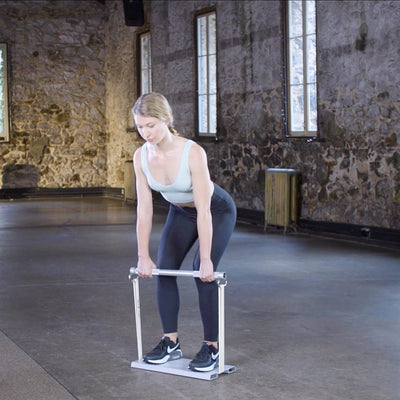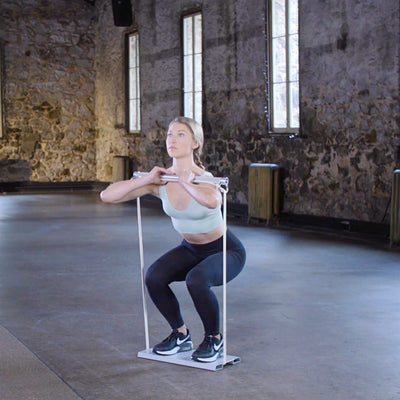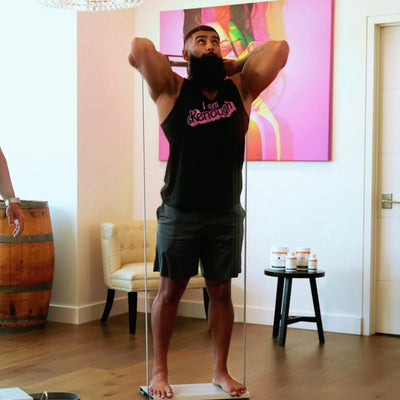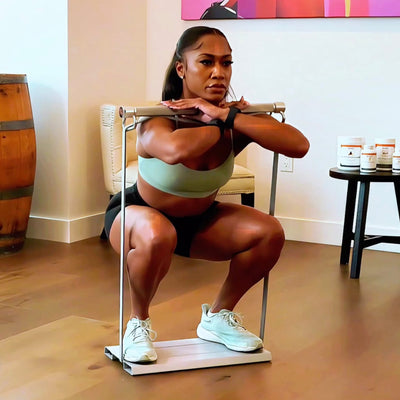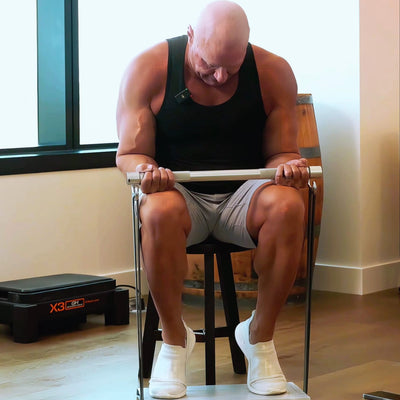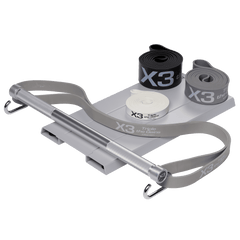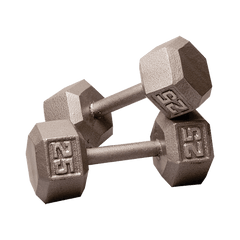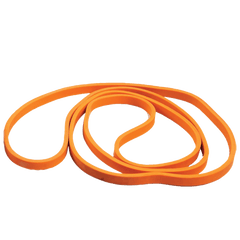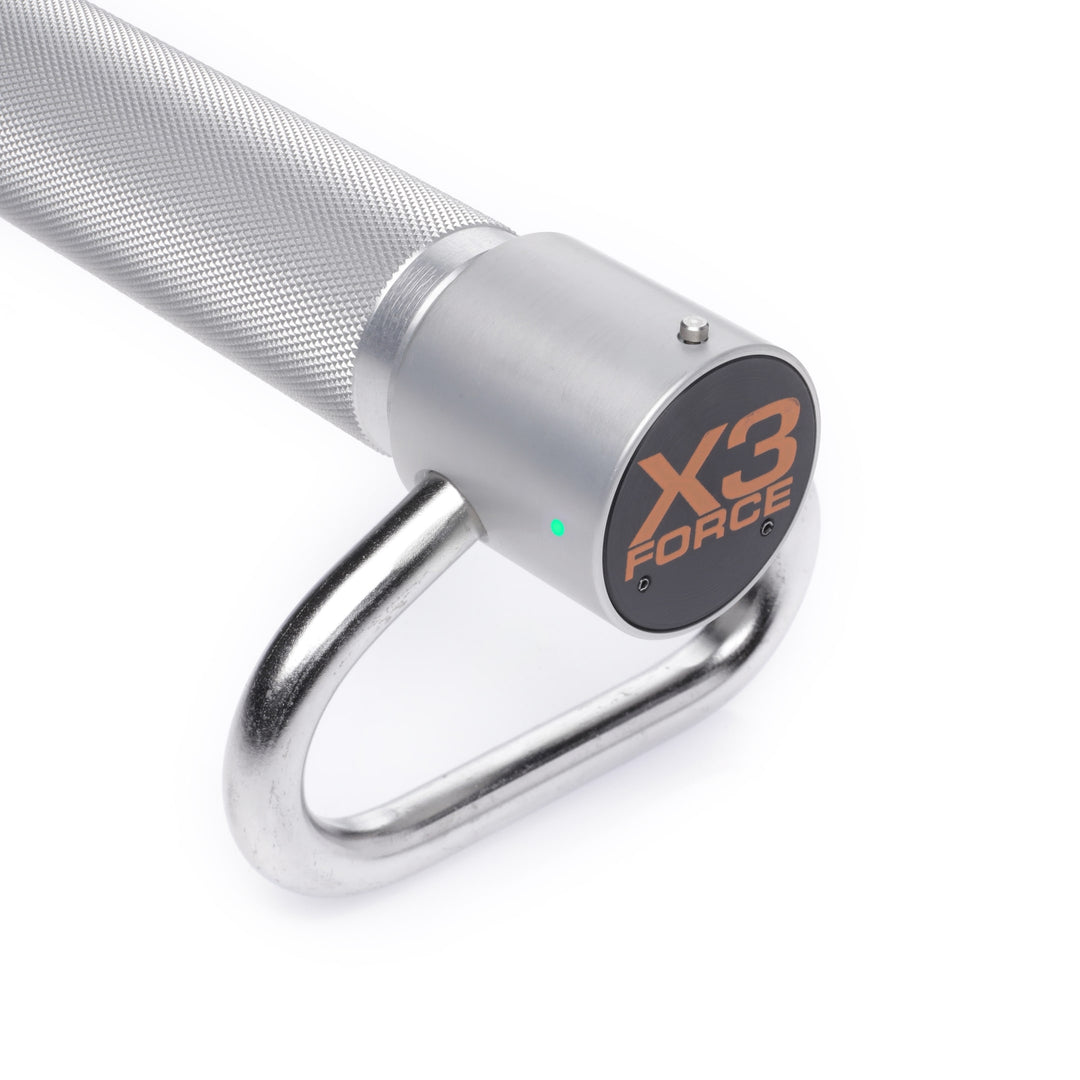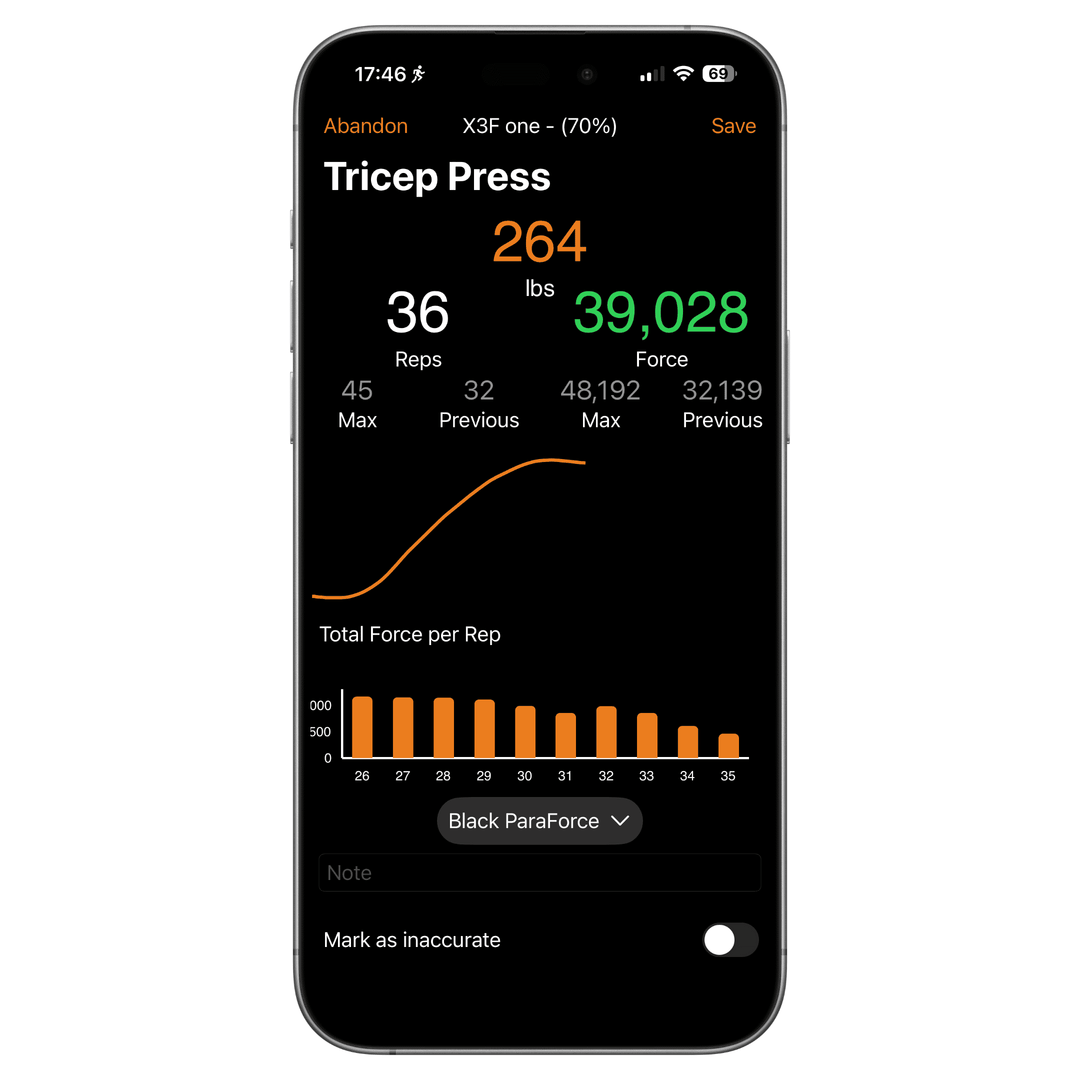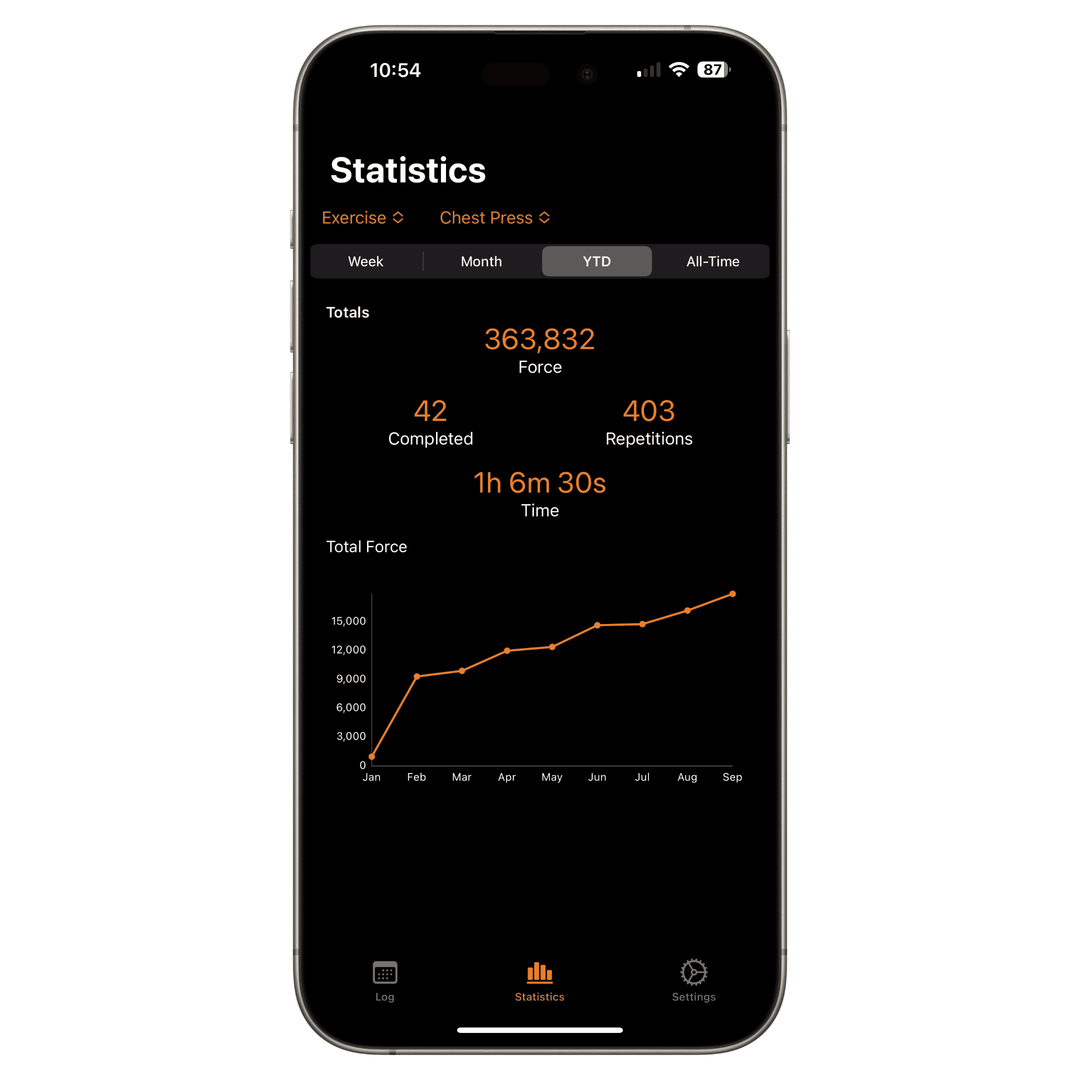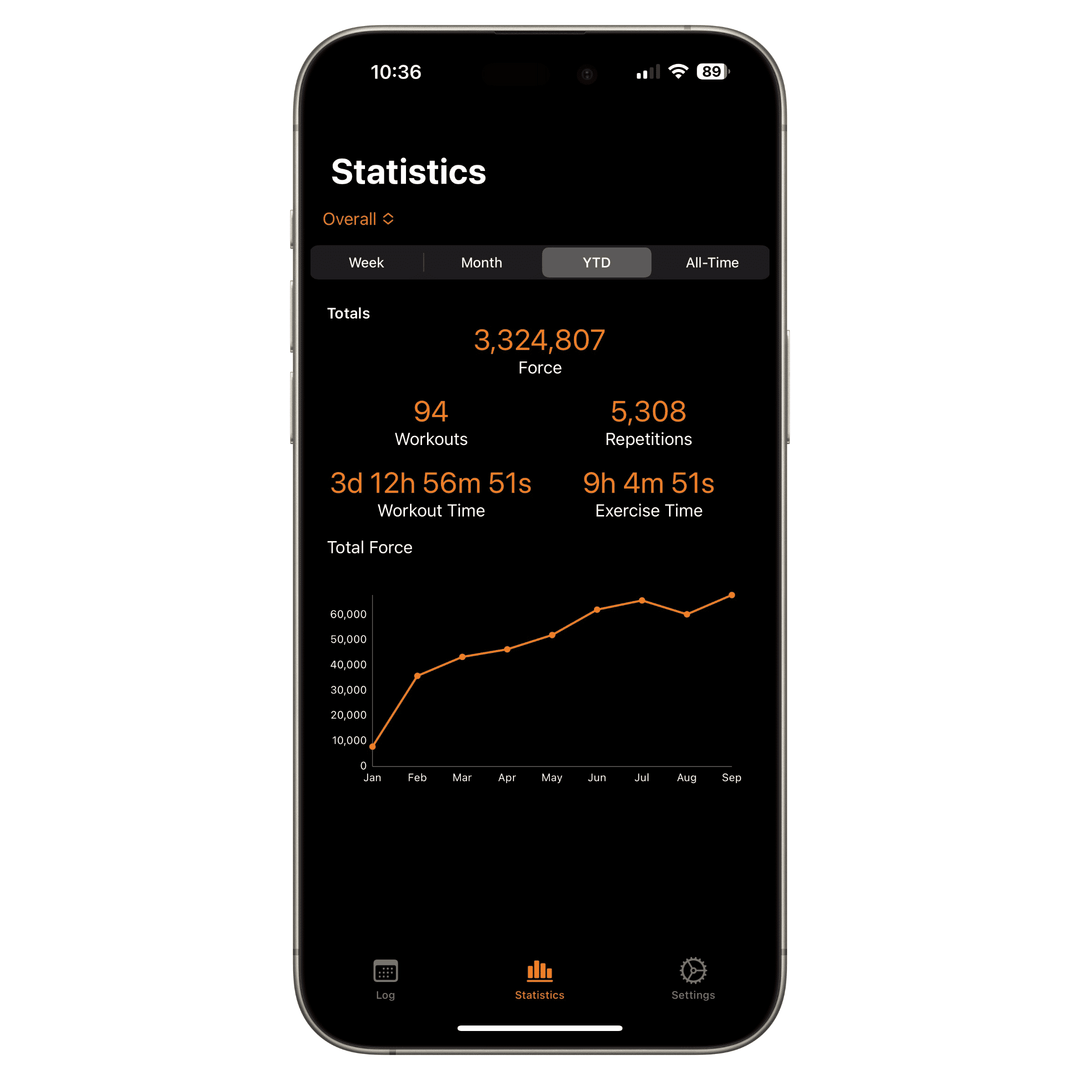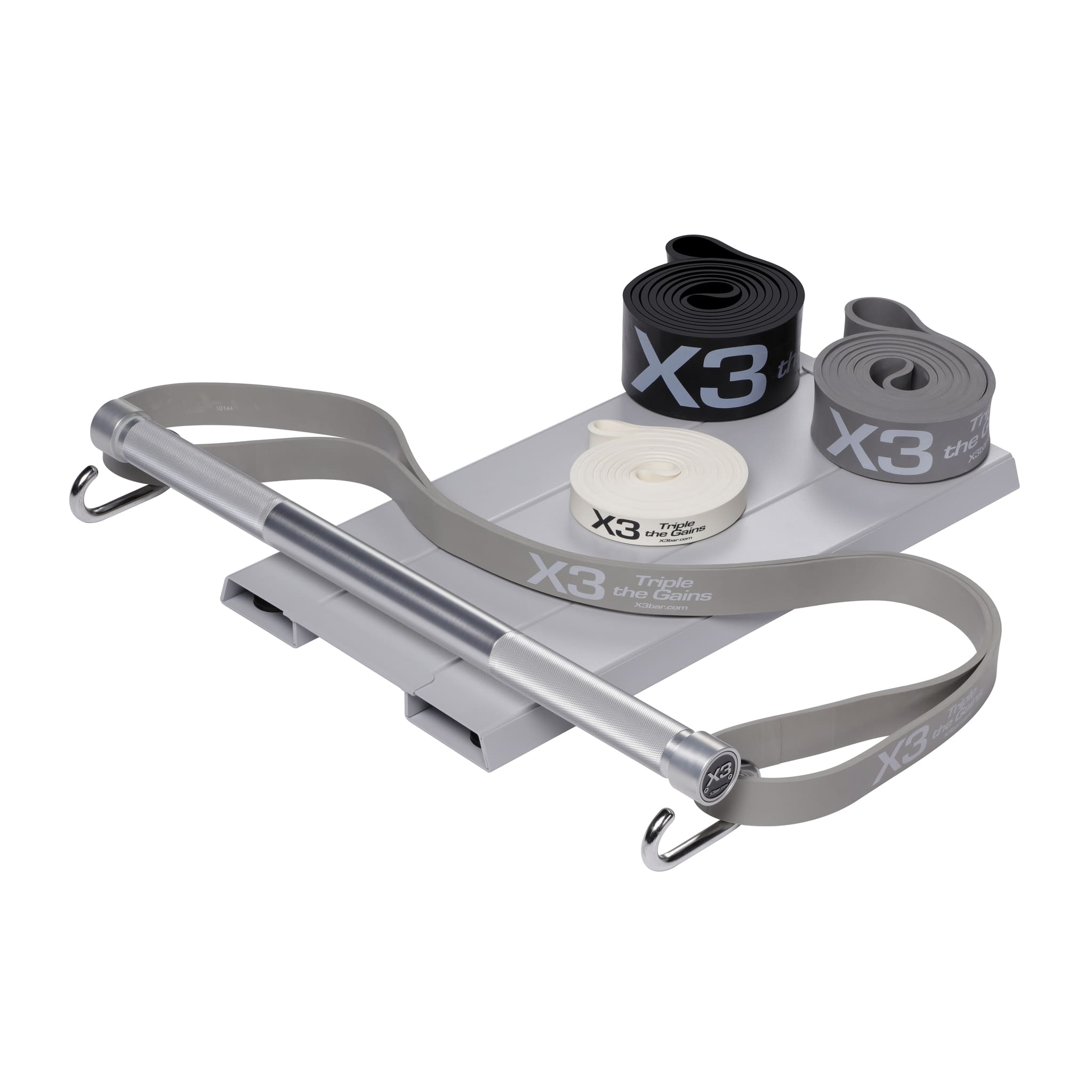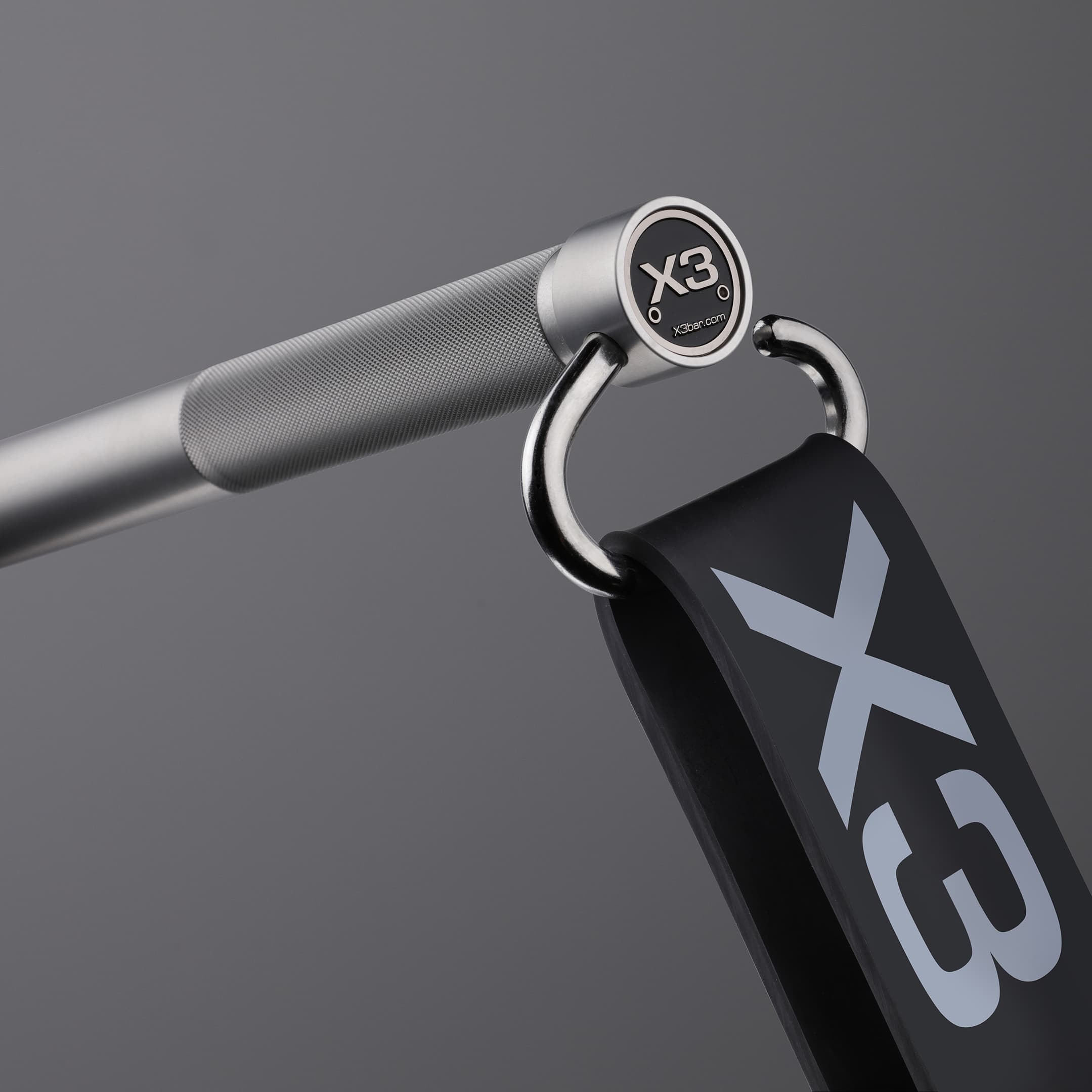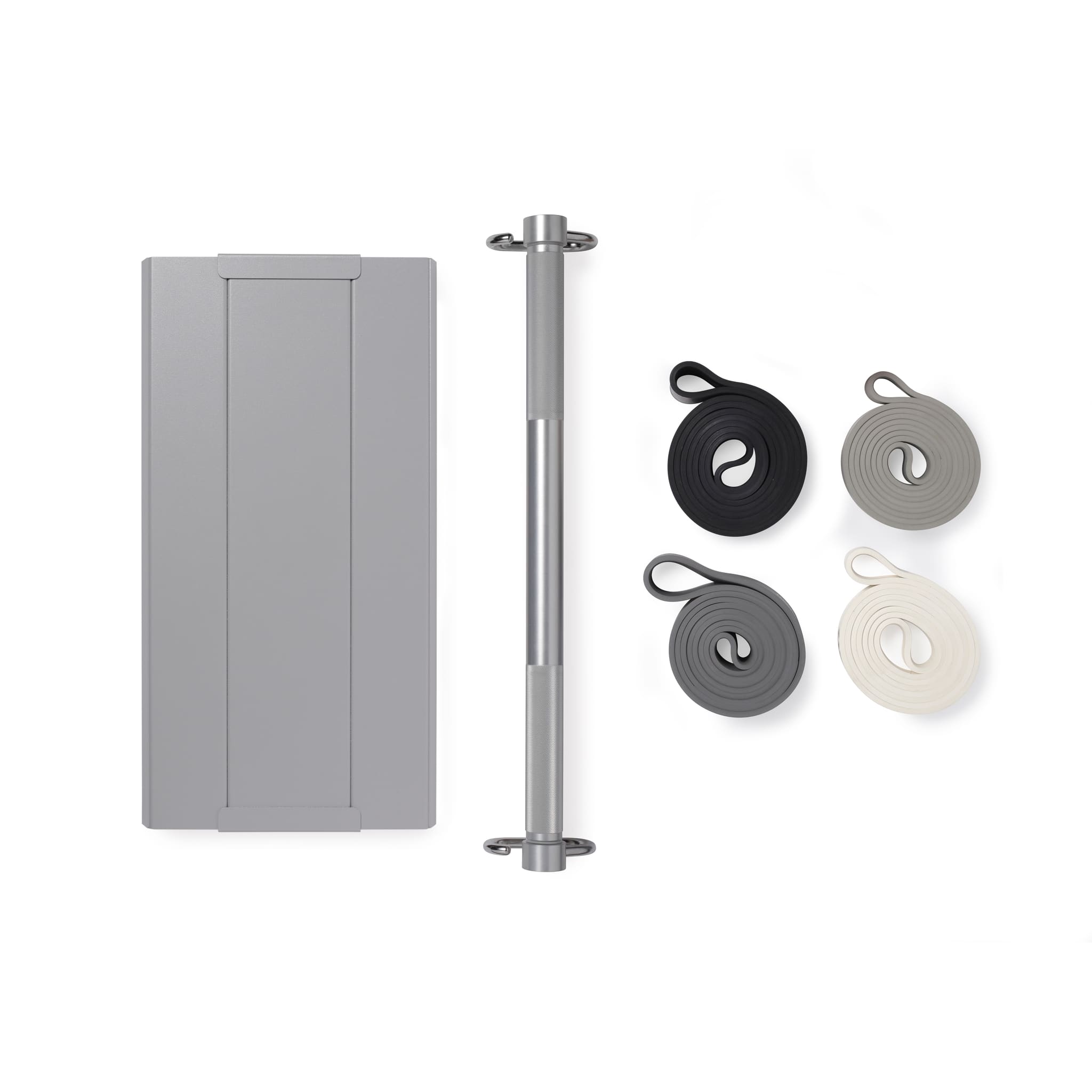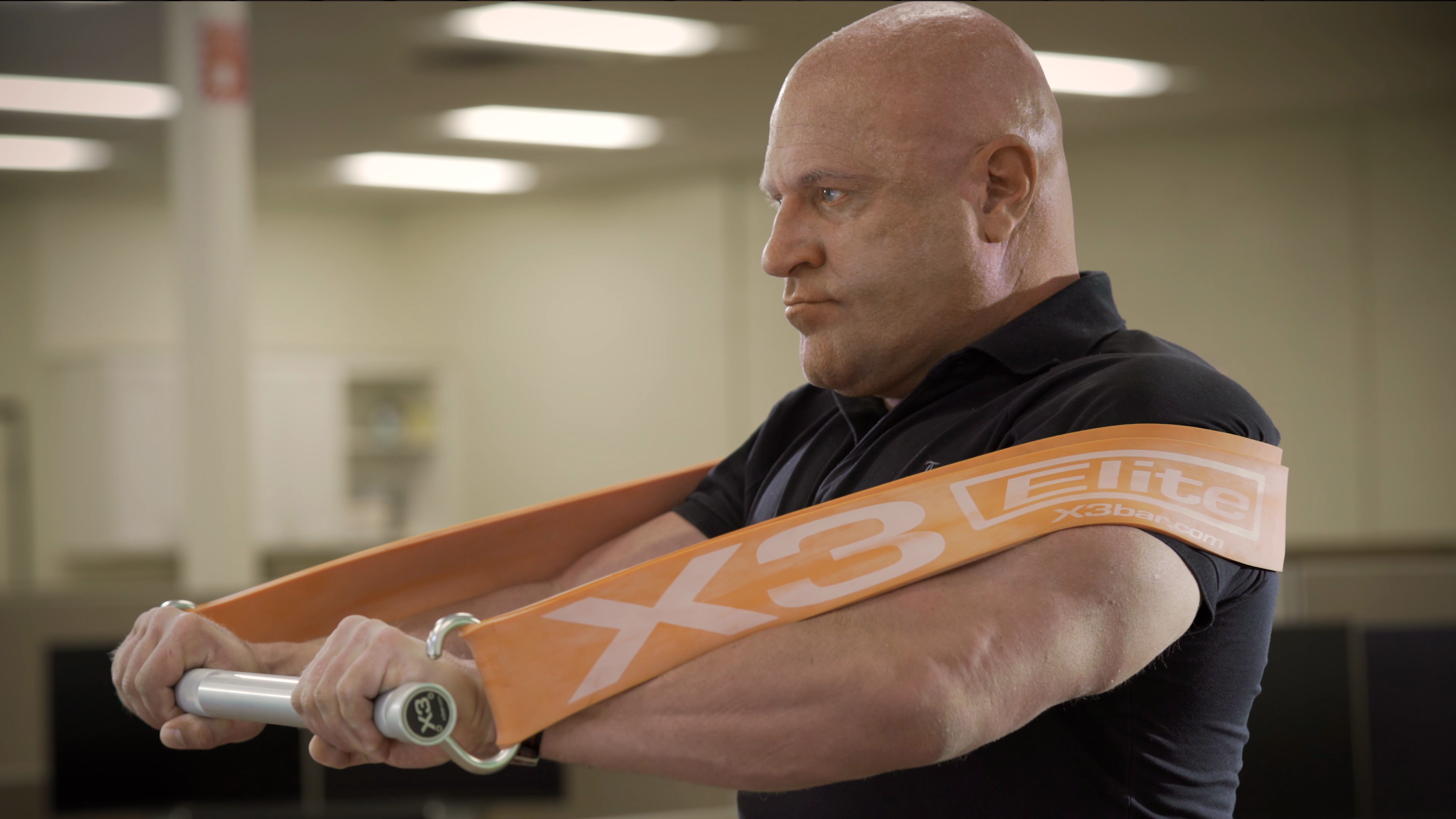X3 SUCCESS STORIES
Real X3 Bar Transformations
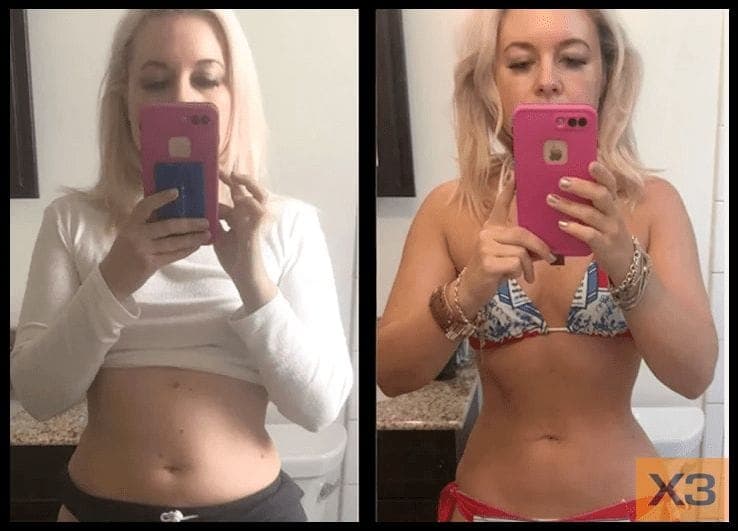
Mandy Watson
“I lost 25 pounds! I’m really short so it shows incredibly, and with the X3 deadlifts, my hamstrings got bigger and stretched the skin on the back of my legs so I have no more cellulite!”
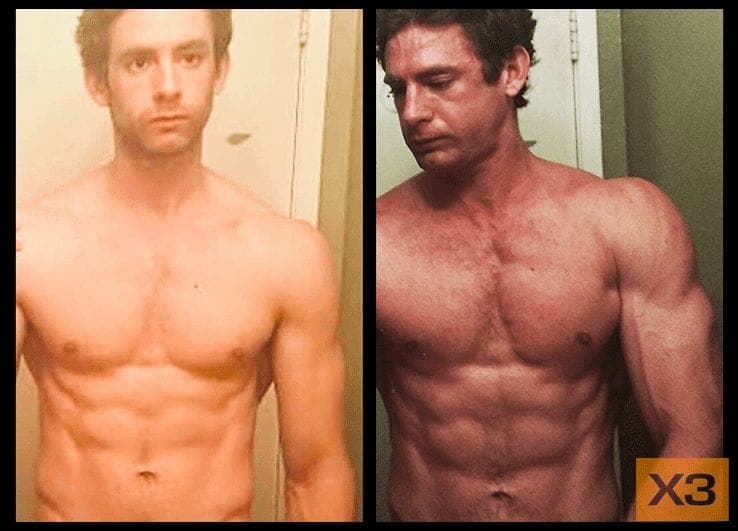
Todd Stratton
“In 6 months, I gained 20 pounds of muscle and lost body fat at the same time, which was unexpected. X3 is fantastic.”
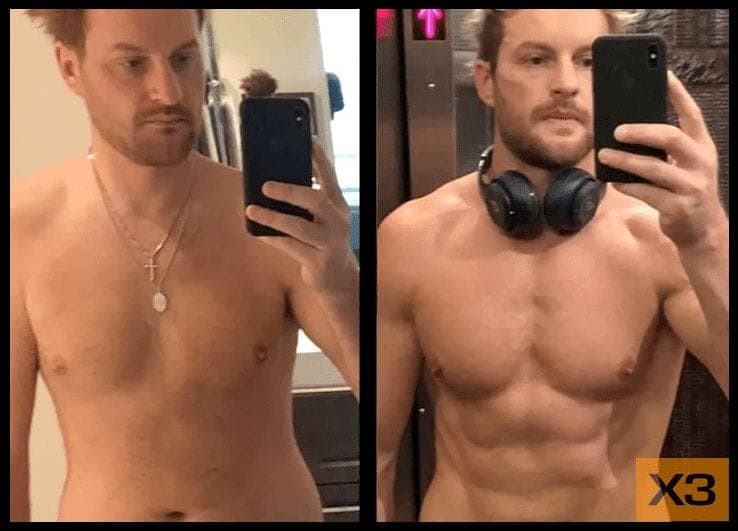
Matt Schweitzer
“Best piece of workout equipment I’ve ever used. Massive strength gains, noticeable aesthetic changes in 4-5 weeks. The amount of muscle and lean mass is better than advertised. My DEXA and the mirror reflect massive changes.”
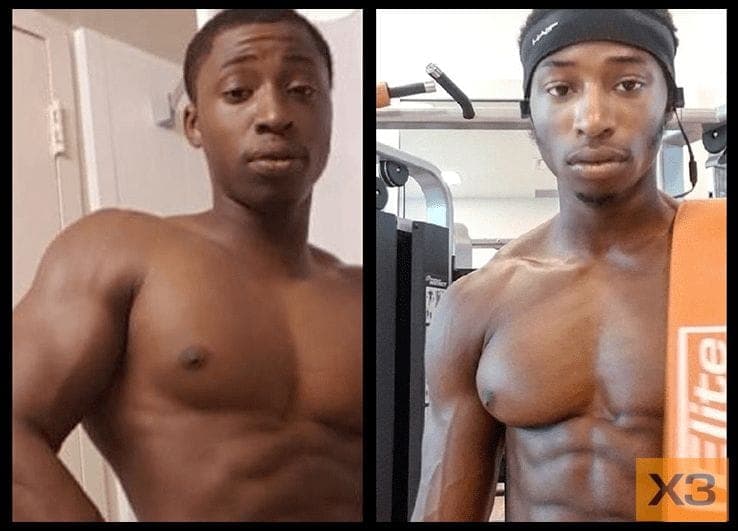
Terrell Rainey
“X3 put 20 pounds of muscle on me in 24 weeks. I am on the road for work all the time, and by using X3, I have no compromise, better results than with weights, and I can do my workout ANYWHERE!”
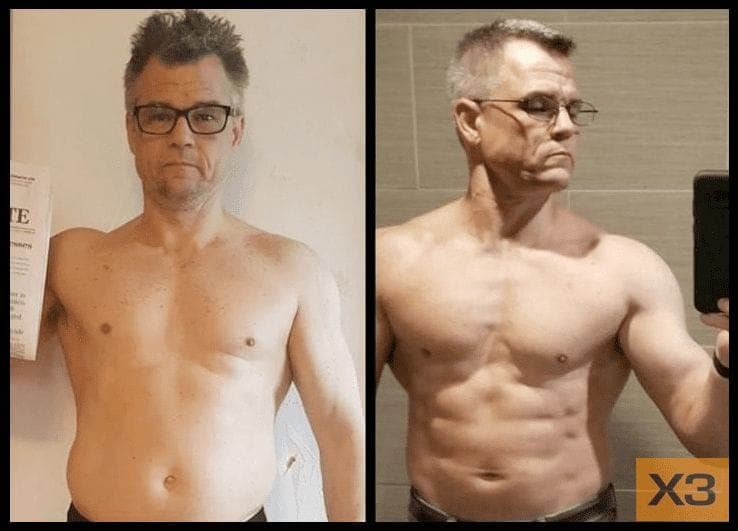
Jeff Huguet
“Got my X3 in March. Been using it now for 8 months (the before pic is about 1 1/2 years ago). I'm 53 years old folks! X3 works. Plain and simple.”
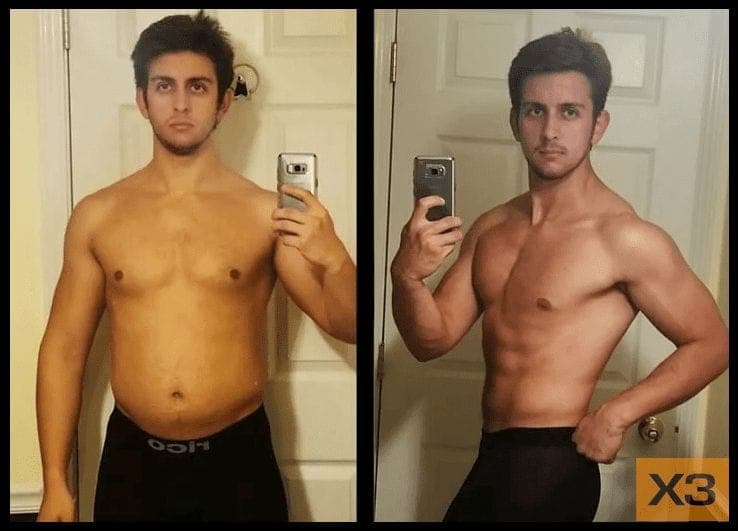
Sabian Beard
“In the four months since I started X3 and adopted intermittent fasting, I've cut from 188 pounds at 12% body fat to 173 pounds at 7% body fat. I also sleep better and have better recovery. I've about doubled my vertical jump for football and ultimate frisbee, and even improved my running performance without any cardio work!”

Dan Wilde
“X3 has changed my life and made it easy to get shredded with limited time being a dad and working full time! I used to do CrossFit and go to the gym for hours! Now I am in the best shape of my life and working out at a fraction of the time! My joints and body are never sore and I have gained over 10lbs of muscle! I recommended the X3 to anyone looking to improve their fitness! 🙌”
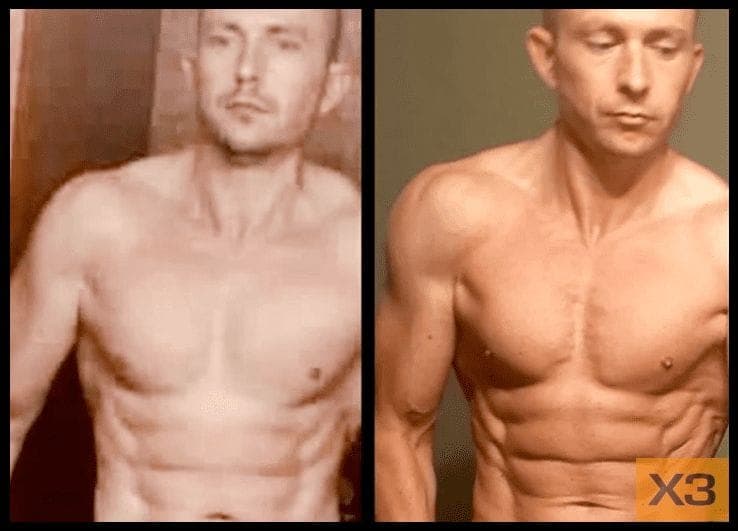
Brandon Witters
“Leaner and 30% stronger in all lifts on average. Strength gains even translate to weight lifting, though now I am 100% X3 for training.”
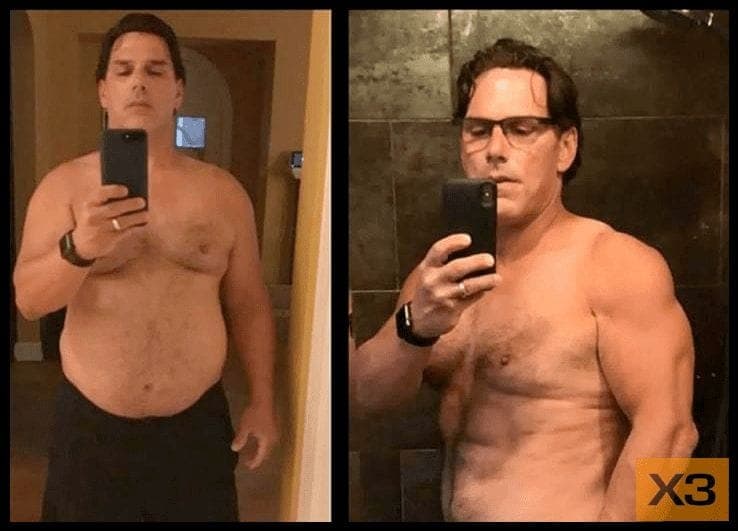
Scott Blasz
“I am 51, and 5' 9. I was injured on the job and lifting weights was not an option. When I started using the X3, I weighed 247 pounds, and was 45-50% body fat. Now, 5 months later, I weigh 193 pounds and I’m about 19-23% body fat.”
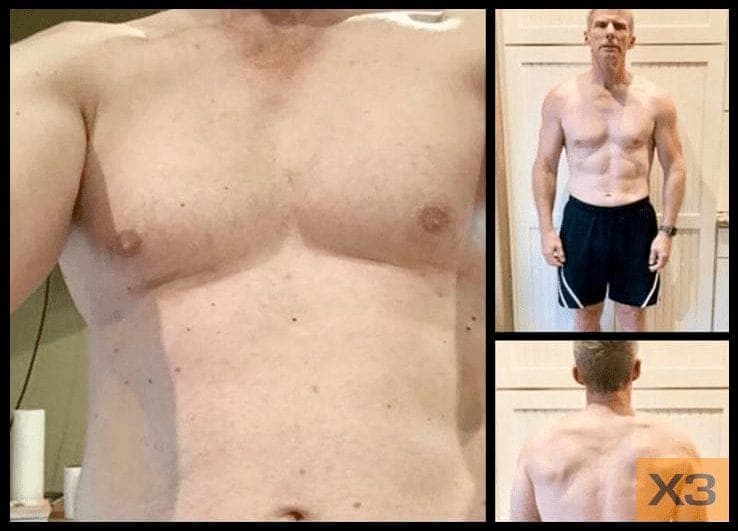
David Fish
“One year ago, I started using the X3 and I’ve been following the workout program. My midsection has always been a problem area and I am finally starting to get the results I want. I've done a lot of other programs with similar or even harder work, but never saw results like this.”
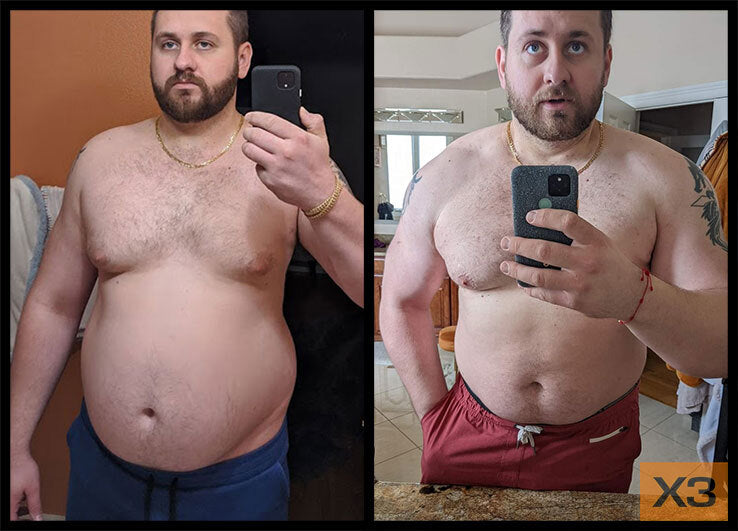
Alex Naymark
“Since I started X3 about 17 months ago, I’ve completely transformed my body by losing 35 lbs of fat and putting on 12 lbs of lean muscle. I’m still getting leaner while increasing muscle mass. This has been a life-saving workout regimen coming from an injury ridden powerlifting world. X3 is the best workout ever designed for putting on muscle. Thank you, X3 team!”
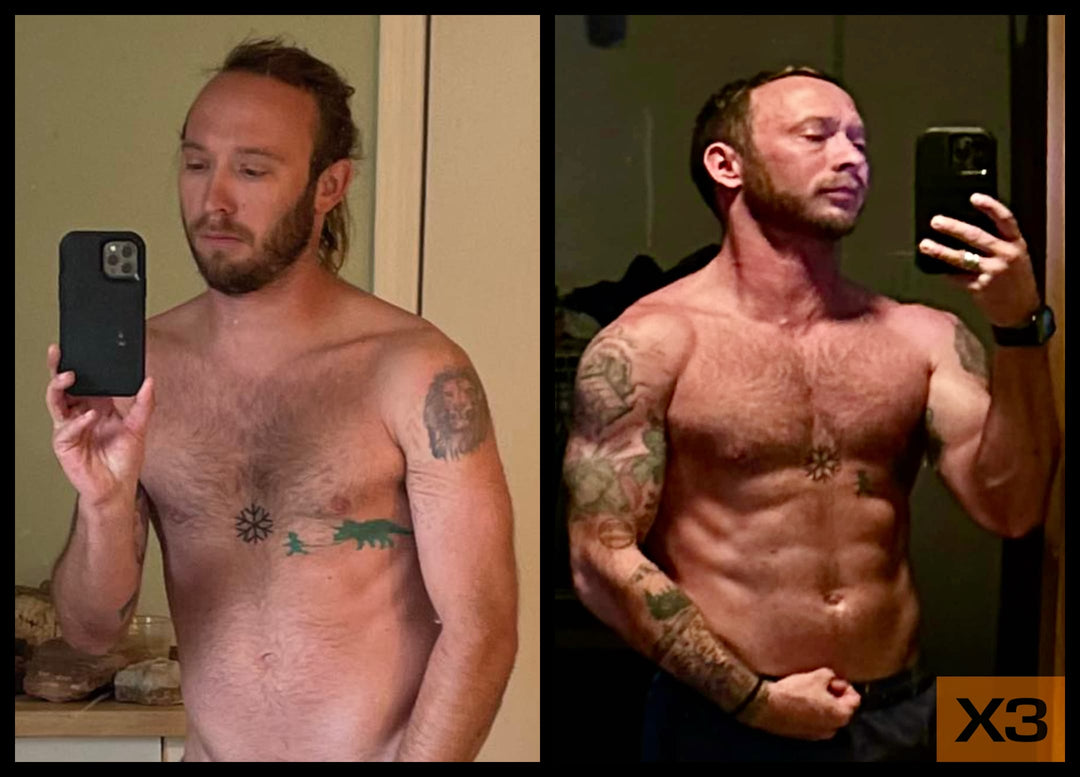
Christian Shepard
“The first photo is around Spring 2021, and the last is some time this morning. It’s really easy to fall off routine, but I just try to pick up where I left off. Without X3, I would have never achieved my results, as I would have never been willing to step into a gym. X3 brought the gym to me. I am forever grateful.”
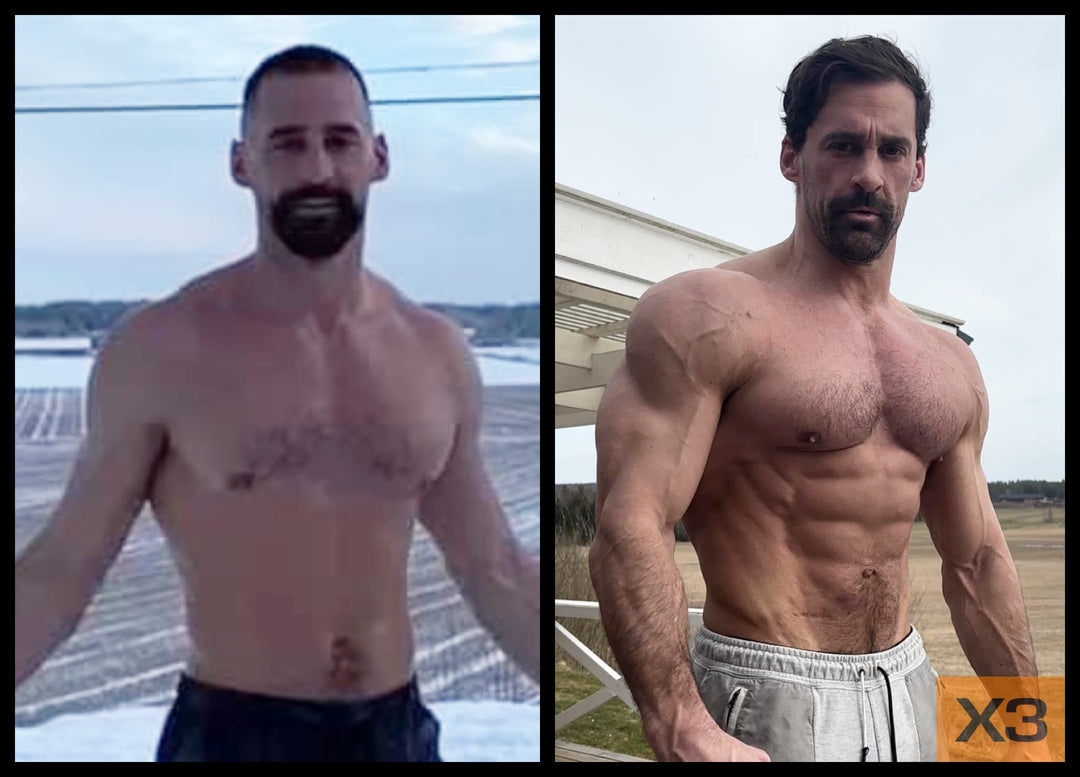
Johan Lagerlof
“I was forced into X3. We moved to a house 20 minutes from town, and I wouldn't have time to train away from home with more kids in my life. I searched for the home training system with the most resistance and found X3. I was still skeptical, but I took a shot and never looked back! This system has what you need to build strength and muscle mass; you will need nothing else!”
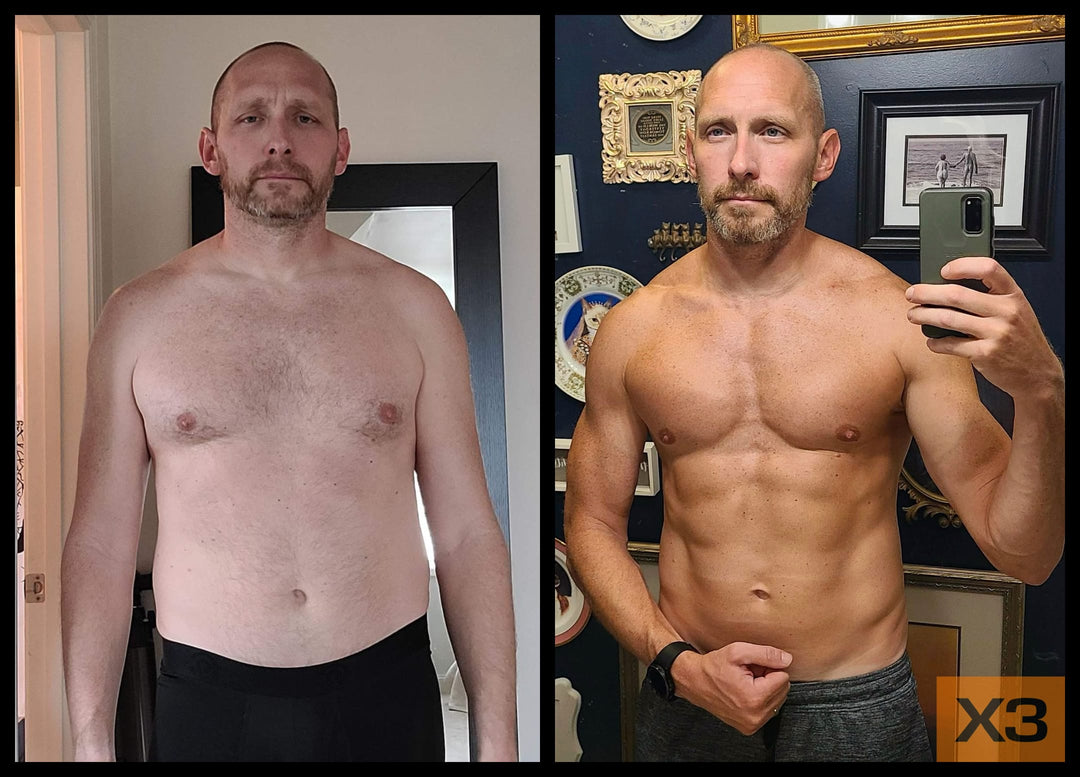
Dan Quigley
“The X3 Bar has completely transformed my fitness journey, enabling me to achieve incredible results with minimal time commitment. Within a short span, I went from 197 lbs to 180 lbs, while simultaneously reducing my body fat from 22% to around 10%, thanks to its efficient 15-20 minute workouts. Not only has it helped me achieve a more defined physique, but it has also helped significantly improve my performance in obstacle course races, enhancing my strength, grip, and endurance.”
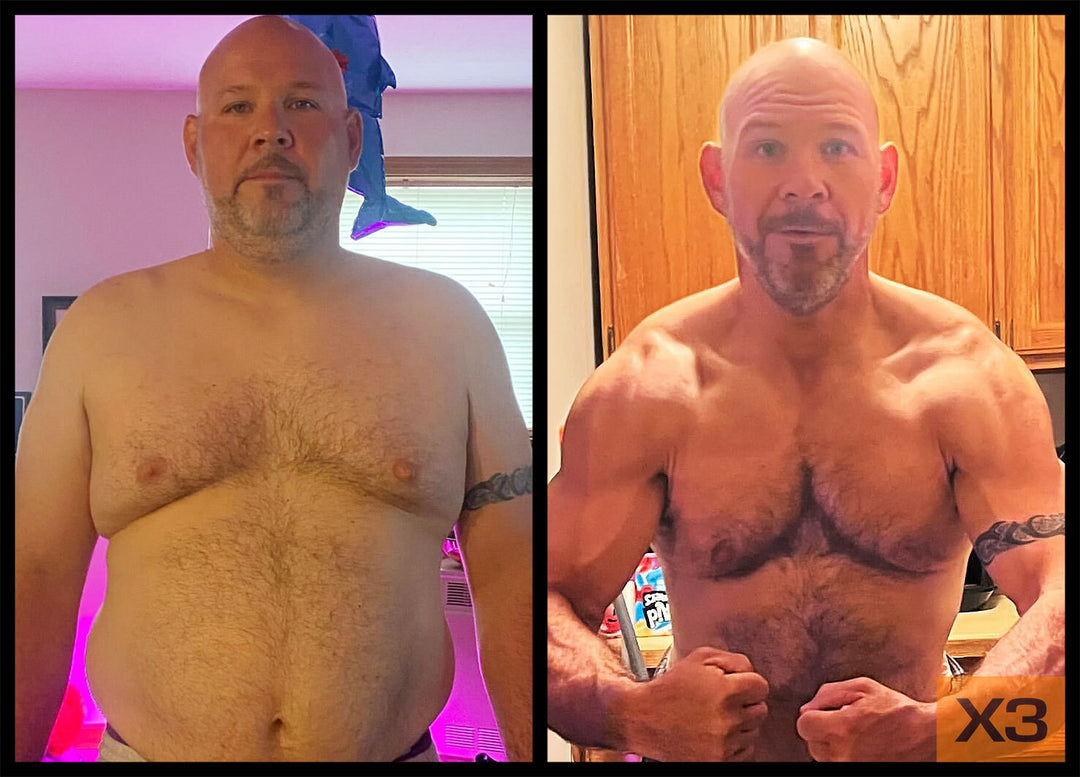
Aaron Legassie
“I stopped training for over 10 years. I just lost the desire to weight train because of the lengthy sessions with minimal results. I've been utilizing X3 for 8 months now. It has changed my life. I've lost 117 POUNDS! The program, as-is, is absolutely amazing. I have gained an incredible amount of mass and can see definition in my abs for the first time.”
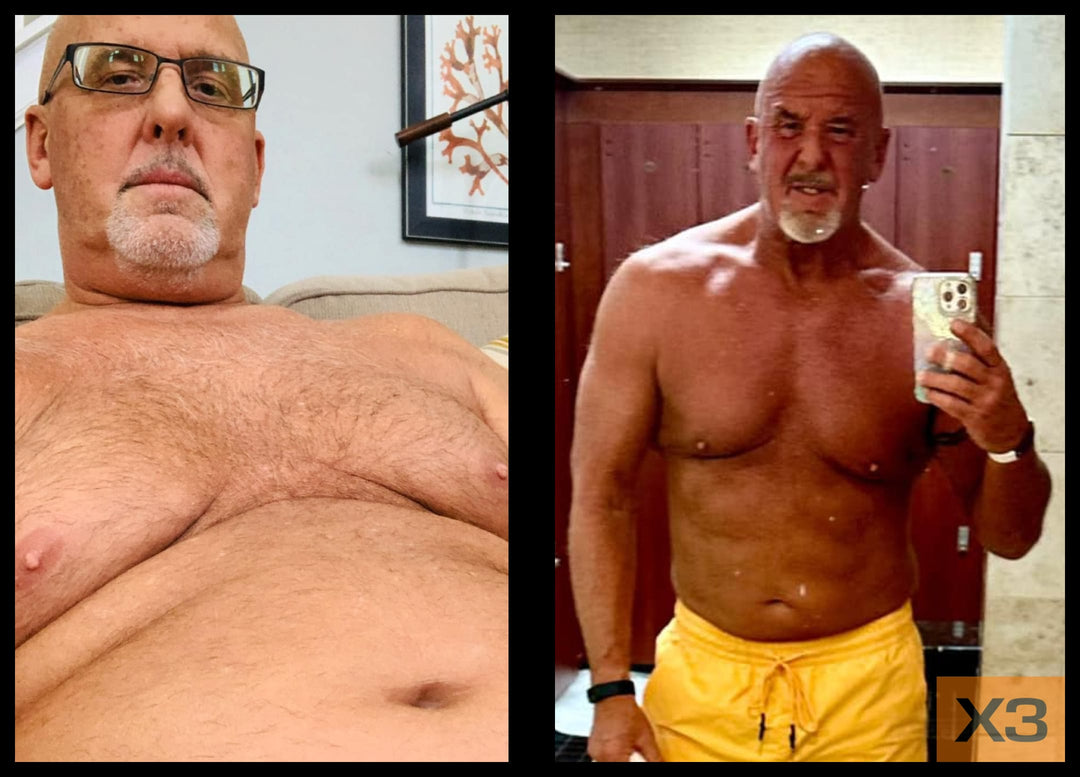
Camaron Corr
“I’m 6’4” and thought I was too tall for X3 at first, but I dug in and did the workouts starting 4 years ago….. this is what it rendered! Drill in as uncomfortable as it is at first, and watch your progress!!”
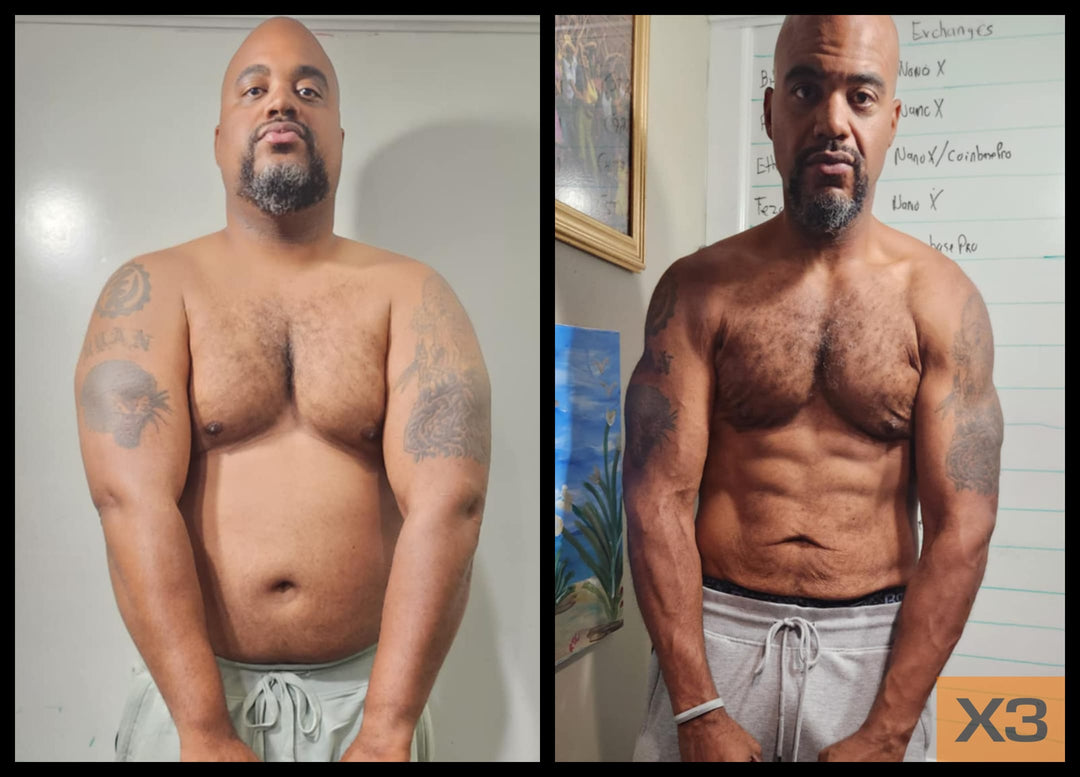
Ryan Cauthorn
“Shout out to the full X3 system (Supplements & Equipment), the carnivore lifestyle, and my coach, Daniel Magyar! In just 16.5 months, I've lost 104 pounds and dropped my body fat from over 35% to under 18%. This journey has transformed my mindset, lifestyle, and relationship with food. I've completely revamped my wardrobe, going from a 44 waist to a 34, and from 2X-3XLT shirts to a Large (sometimes even Medium). My suit jacket size has also reduced from 54L to 43L. Now the real fun begins—LET'S GET SHREDDED! 💪🔥”
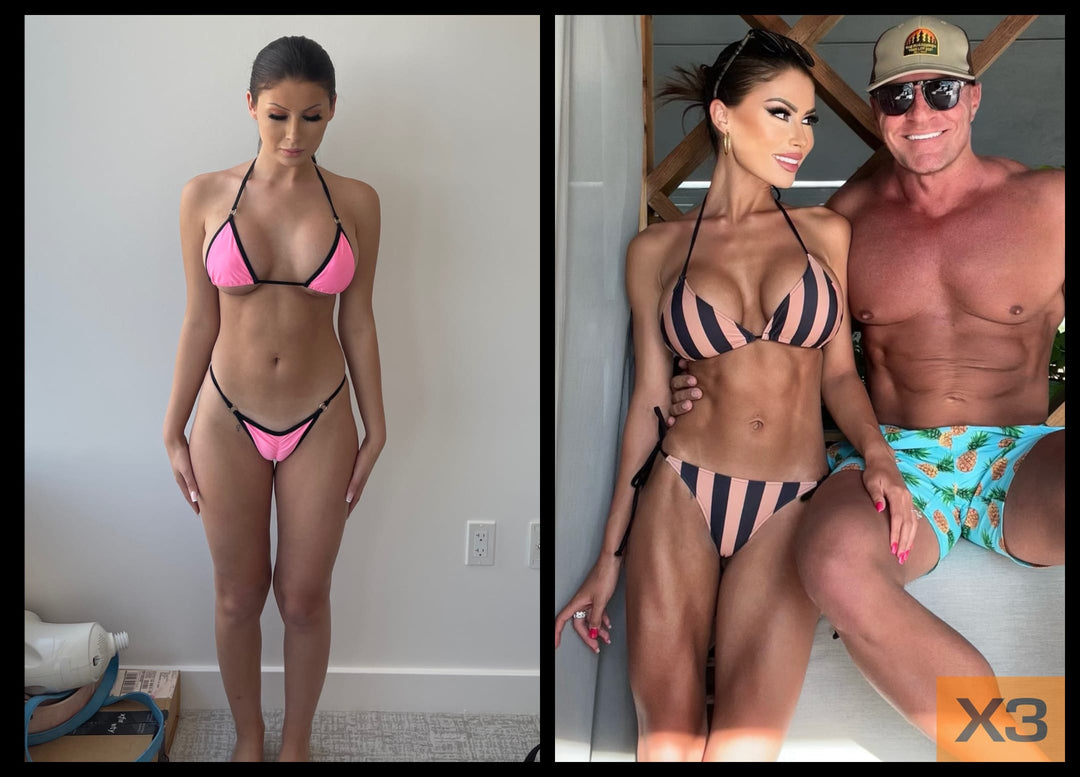
Caroline Jaquish
“I was weightlifting for a few months before I started using X3, and got almost nothing out of it. X3 made me noticeably stronger with each workout, and my body massively responded. Muscles started showing, and I started to look more feminine, but at the same time, the new muscle acted as a metabolic engine that was running all the time, even while I was sleeping, which is how my body fat began to disappear. I am thrilled with X3, and will never go back to regular fitness stuff. This is the way.”
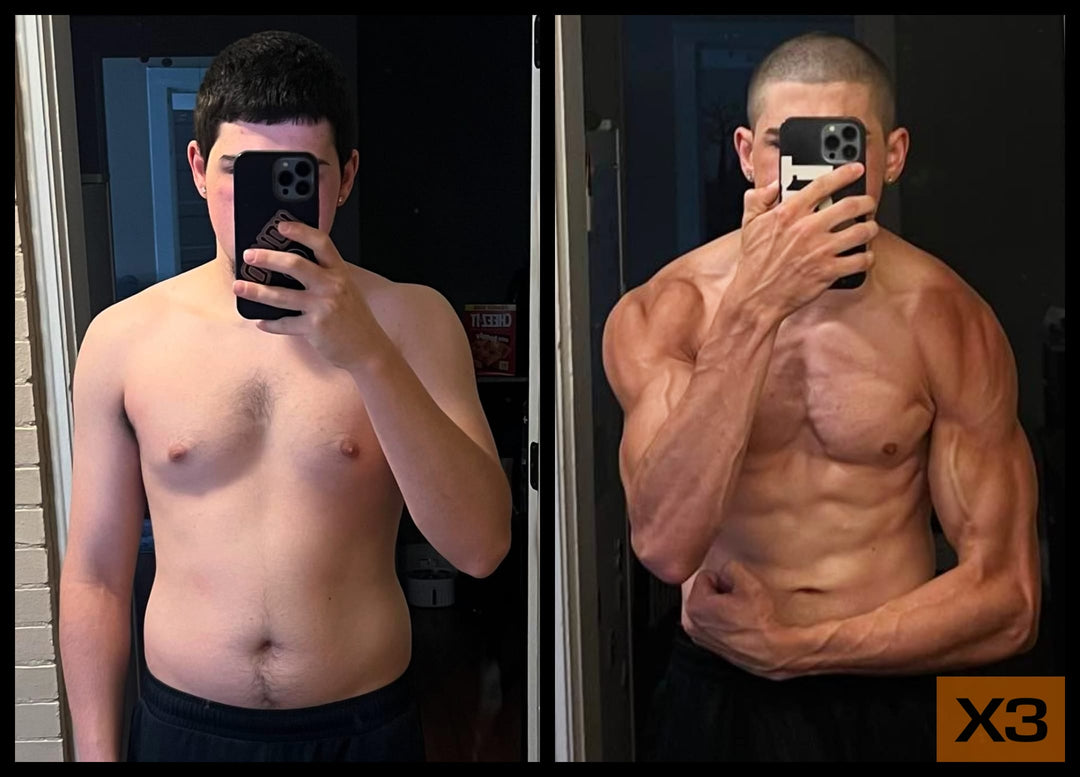
Logan Marsh
“I wanted to lose the baby weight I gained while my girlfriend was pregnant. With a year of a carnivore diet, X3, and increasing my protein intake with Fortagen, I achieved massive muscle gain and lost weight. Now, I weigh in at 145 lbs. I'm thrilled with the progress and aim for 160 lbs!”
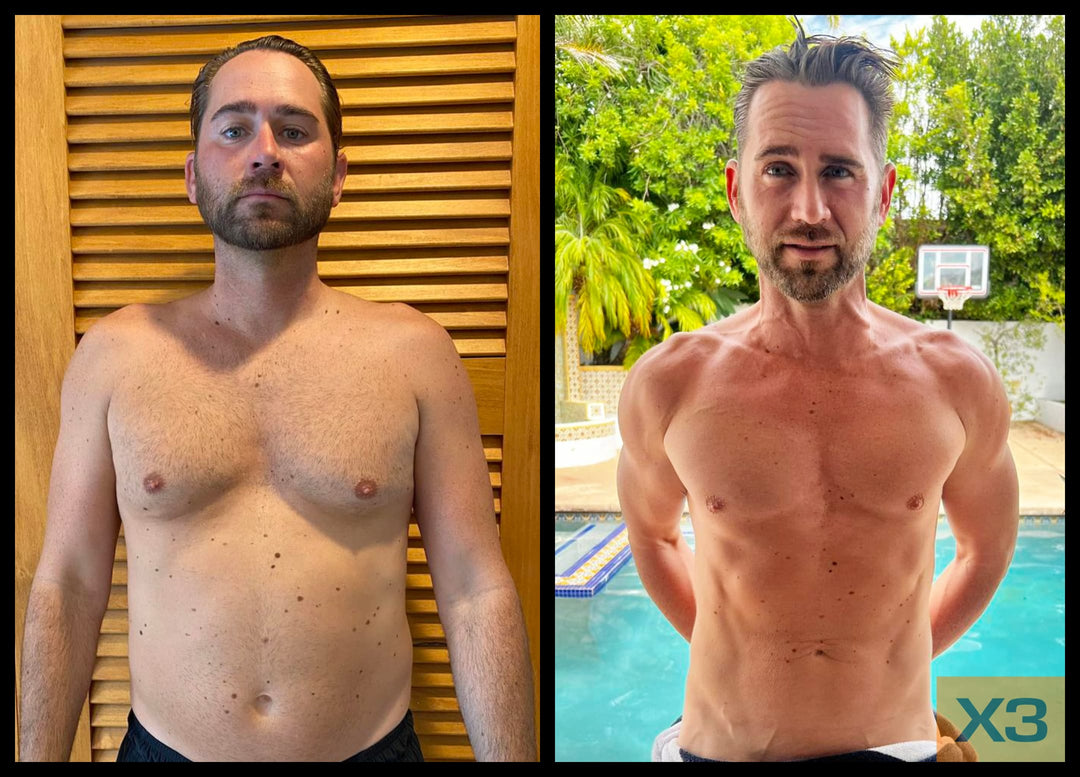
Grant Denham
“Beyond grateful for you (Dr. J) educating the world on variable resistance and the creation of the X3! It's all I used in my fitness transformation for exercise. I also use fortagen twice daily and eat carnivore. I've read your book twice and watched every podcast you've done on YouTube. I would always injure myself in the gym and never had consistency. Weightlifting sucks compared to X3!”
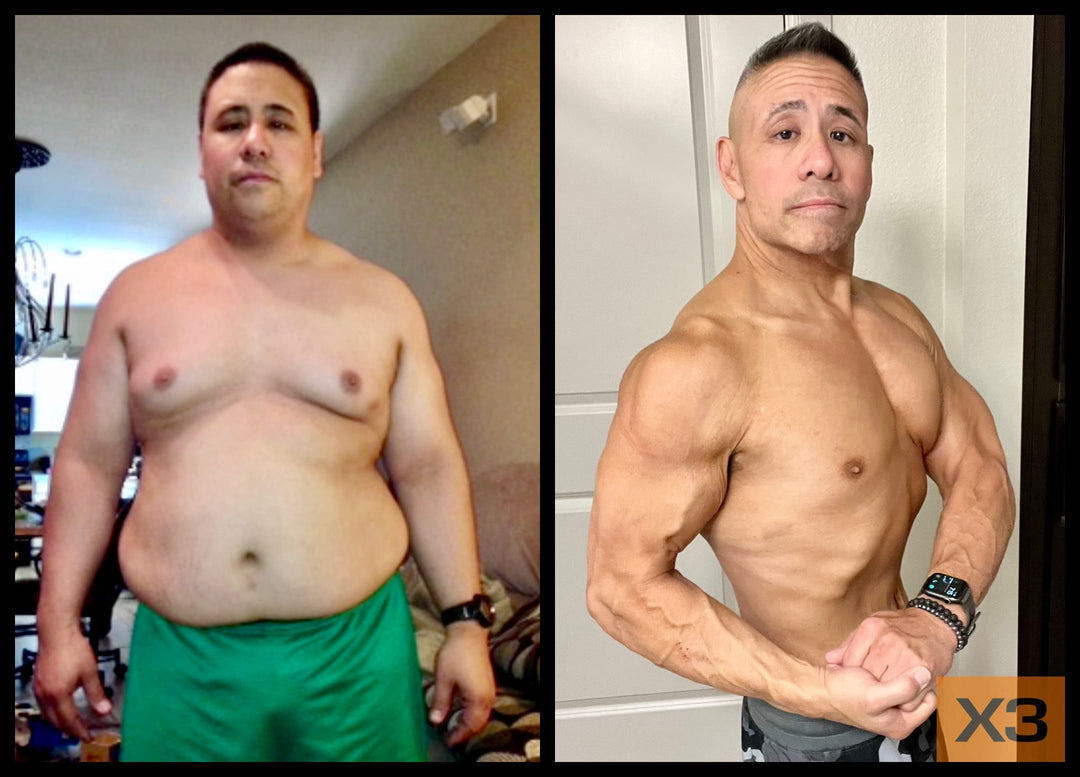
Rich Ouano
“I’ve been using X3 for just over four years. I haven’t stepped inside of a gym since then. I will NEVER ever go back to free weights again. My life, as well as my physique, have completely transformed. I barely recognize myself in the mirror, and the gains continue, week after week. Thanks so much to Dr. Jaquish for this amazing, life-altering, and life-changing invention!”
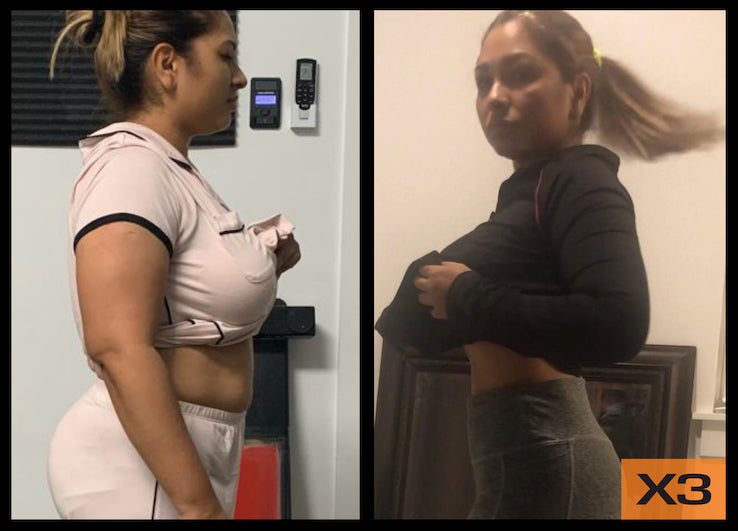
Mabel Fornos
“I lost 30 pounds of fat in 4 months and gained muscle. My body has transformed. X3 is Amazing! THANK YOU!”
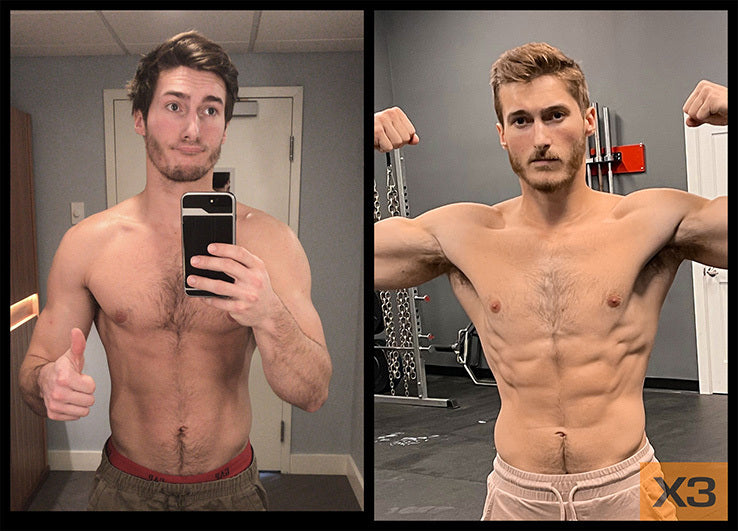
Caleb Demmons
“I started at about 190 pounds in March. Today I weighed in at 173. Being light but strong is exactly what I need and x3 has helped me skyrocket my results and training. As a professional parkour athlete, regular weightlifting always left me too sore. With X3, I can lift as heavy as possible and jump right into training afterward. I’m never sore and I perform better. X3 is the perfect supplement to my training.”
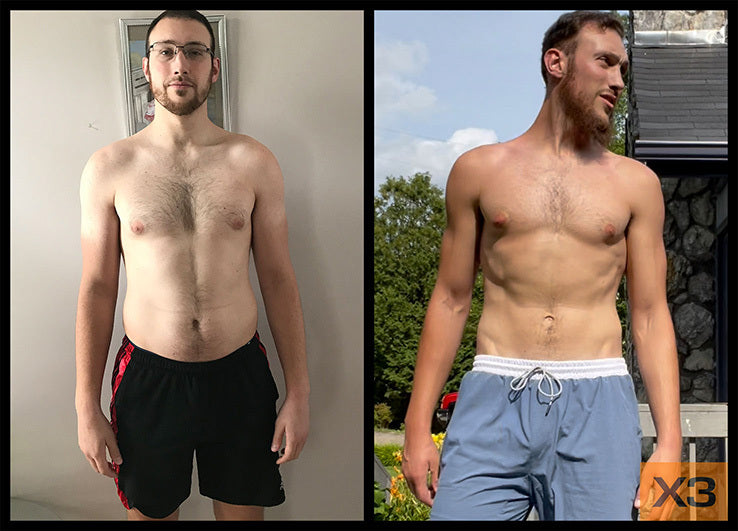
John Cannon
“I had consistent lower back and knee issues prior to X3. After using X3, I have had no injuries or ailments. My starting weight was 278 lbs and my current weight is 243 lbs (I’m 6’10”). I follow the nutrition protocol discussed in the book and strive to hit complete exhaustion on every workout with good form and repetitions.”
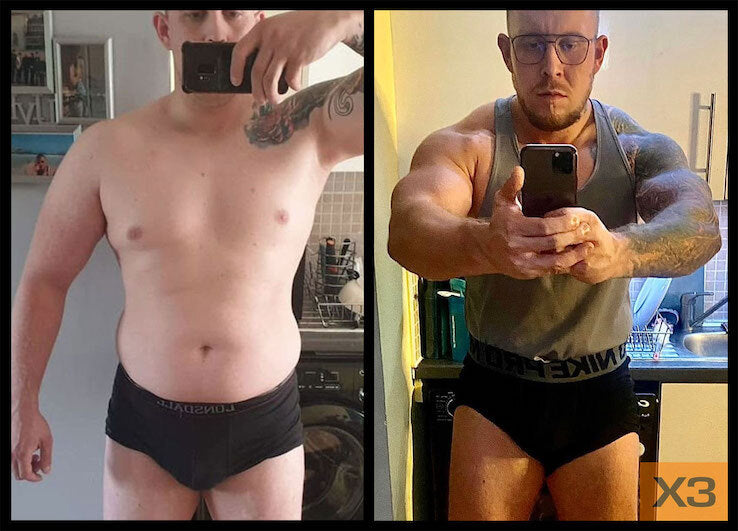
Martin Vida
“It's been 8.5 months since I started my journey with X3 bar. I'm down from 255 lbs and 35% bf to currently 220 lbs and 15% bf. Definitely the best investment I have ever made. X3, OMAD, and carnivore has become my lifestyle!”
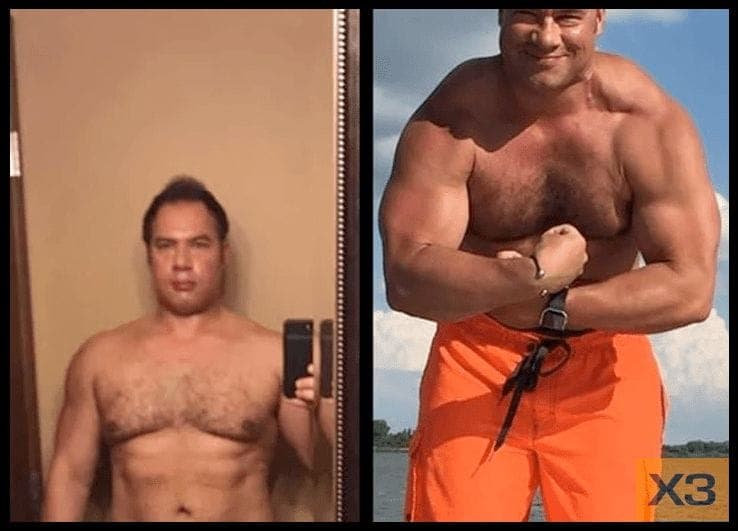
Ted Radkoff
“An inch up on my arms, 6 inches down in my waist: seven months. This is far surpassed my expectations. Never picking up a weight again.”
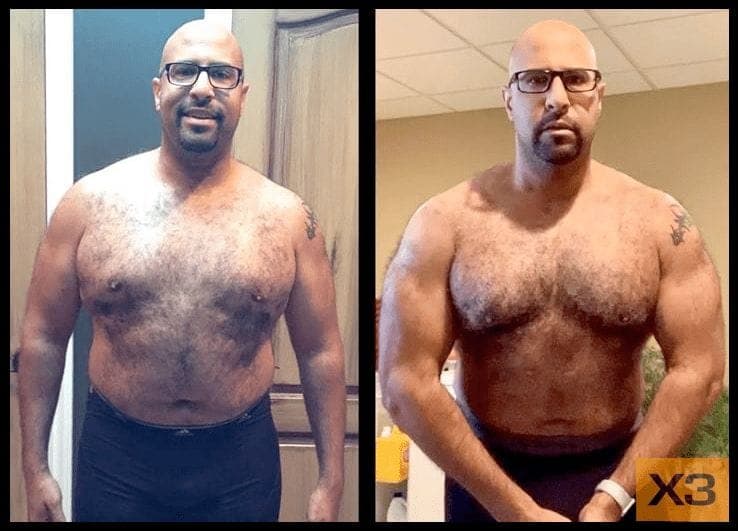
Dan Rodriguez
“I followed Dr. Jaquish’s protocol, and used only the X3. I lost 2 inches around my waist and my weight stayed the same.”
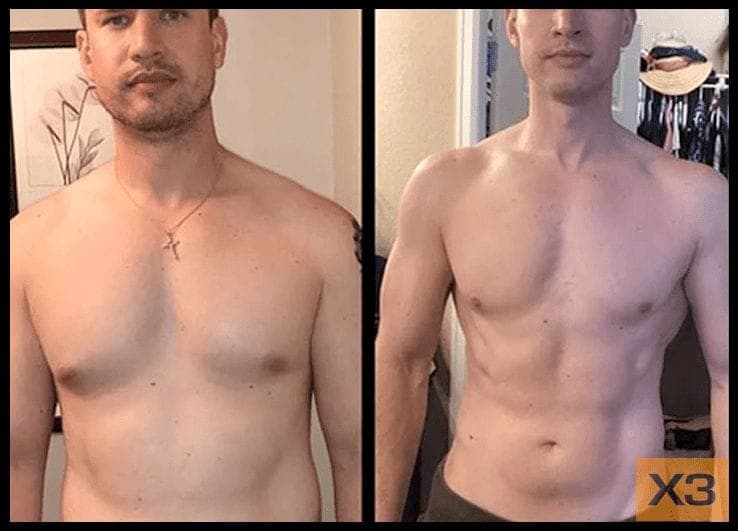
Patrick Tims
“I’m Active Duty and have to maintain a certain level of conditioning for my annual physical fitness test. With X3 I’ve seen an increase in muscle mass and toning. In 8 months, my waist went from 35 to 31 and my run, definitely feels easier to do since my legs are stronger.”
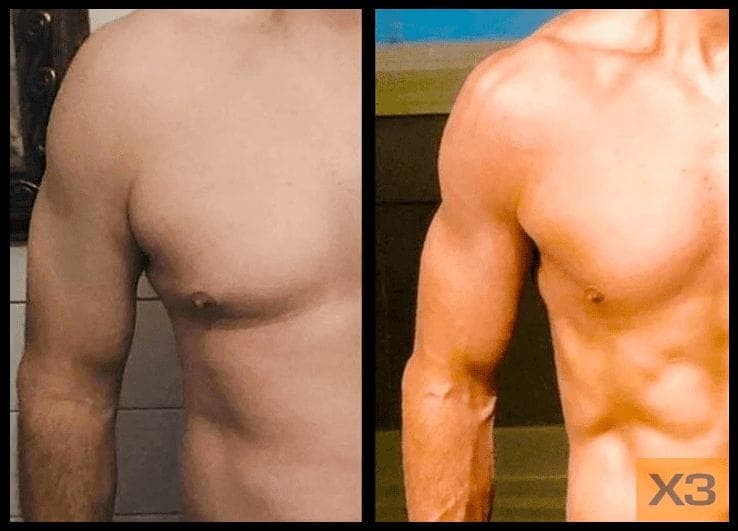
Keith Bout
“Best shape of my life, and I am in my 40’s. The X3 is super efficient. Not only do I use it, but I have the football team I coach using it too. Amazing results.”
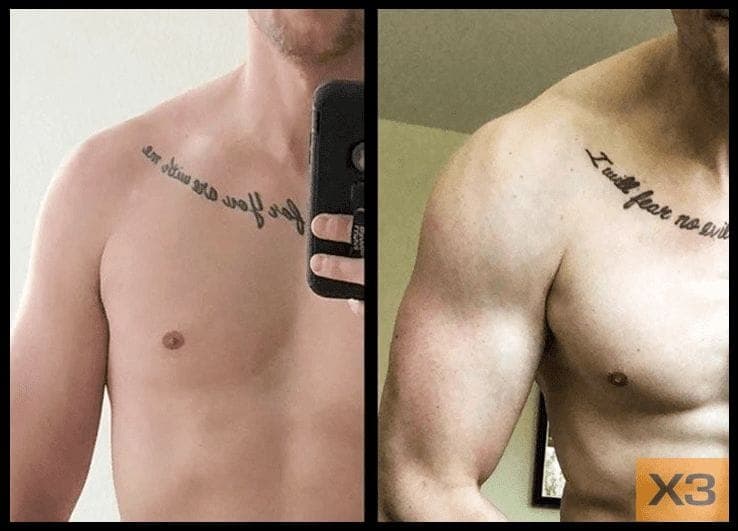
George Hayworth
“The results are outstanding but the other really surprising thing for me was how X3 hasn’t aggravated my existing injuries. In many ways it has rehabilitated them. I also went from 32 waist to 29-30 waist but had to have most of my pants tailored to be let out to make room for my bigger glutes.”
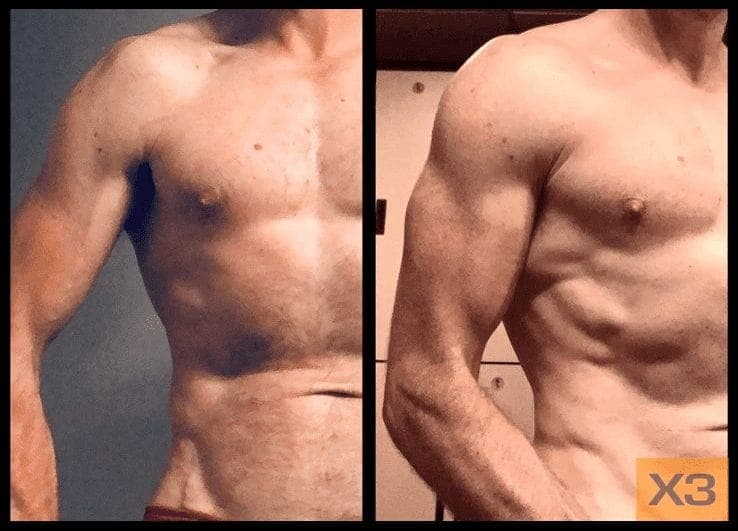
Tim Bertrand
“In 12 weeks: Arms 5/8 bigger. Chest 7/8 bigger. Only worked out 10 min-ish per day. X3 is super efficient, and more effective than weight training. I am getting better results with this than with the 2 hour per day program I was on before.”
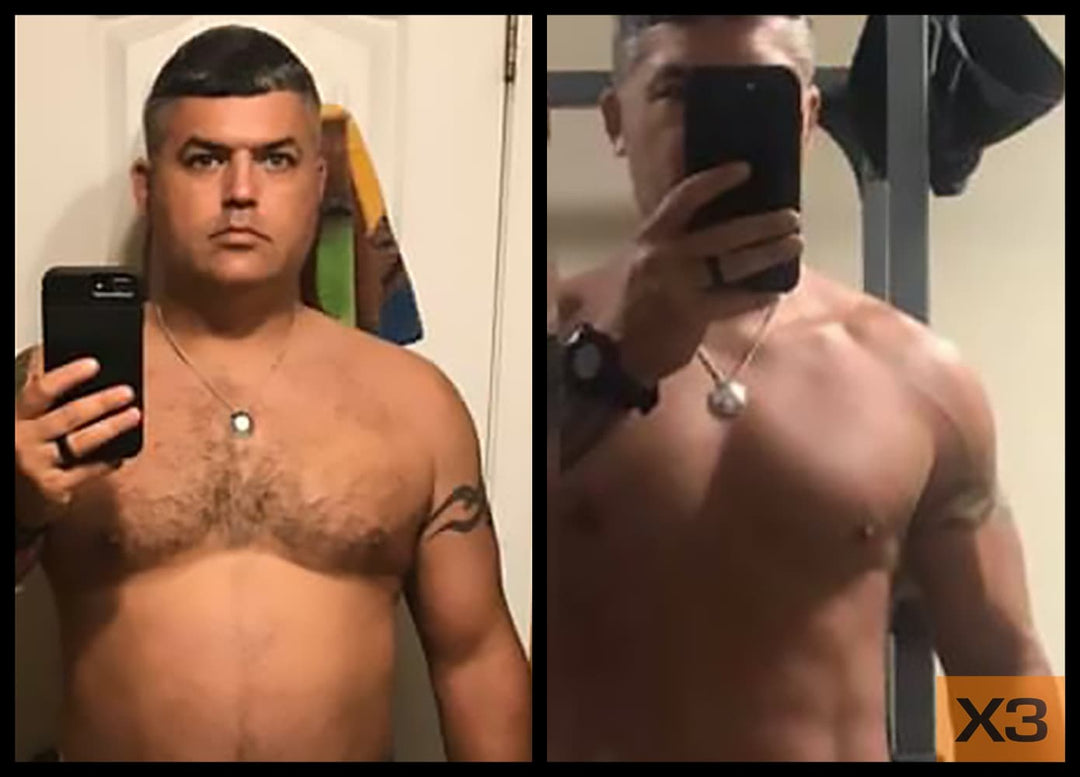
Eric Bourgeois
“My results in a year. I am a first responder so keeping fit is required, and now I am stronger and better conditioned than I ever imagined I could be. I liked the X3, but couldn’t understand the price. I started using just regular bands, but realized if I wanted to do meaningful strength training, the bands alone were hurting my wrists and ankles. NOW I understood X3 and pulled the trigger. Best decision I ever made.”
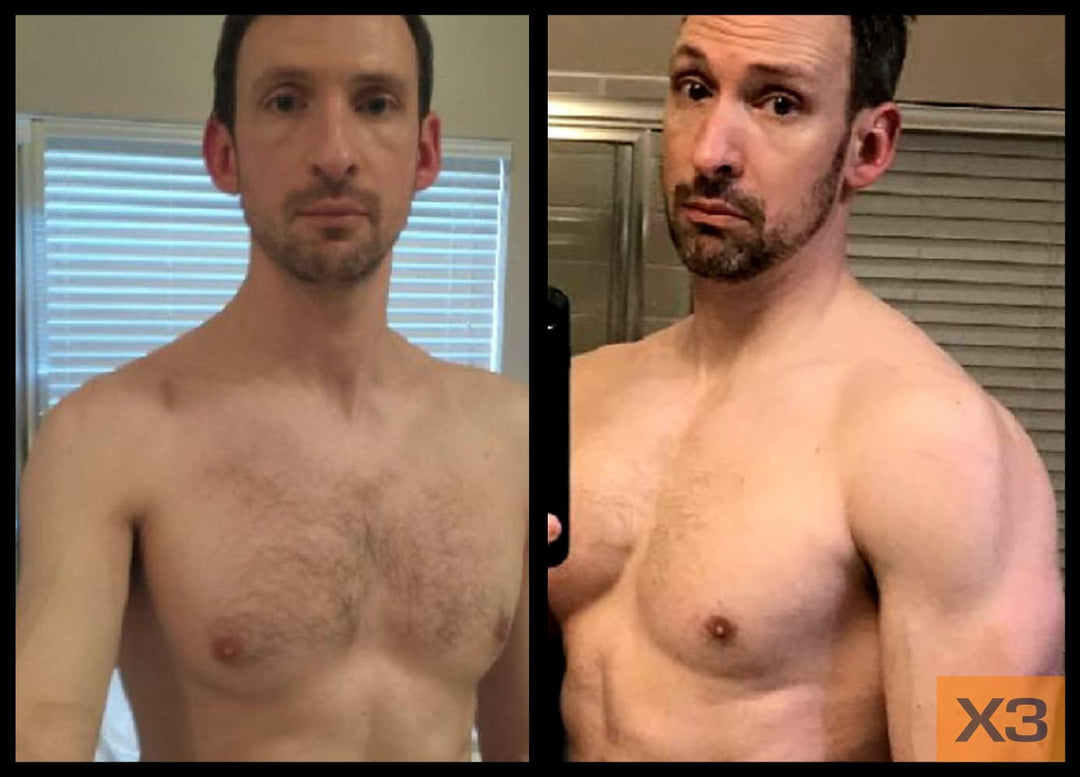
Jason Young
“In 15 months, I have gained 35 pounds of muscle using just X3 while maintaining the same body fat. I was always a hard gainer with weights, and hardly got any results. X3 changed everything.”
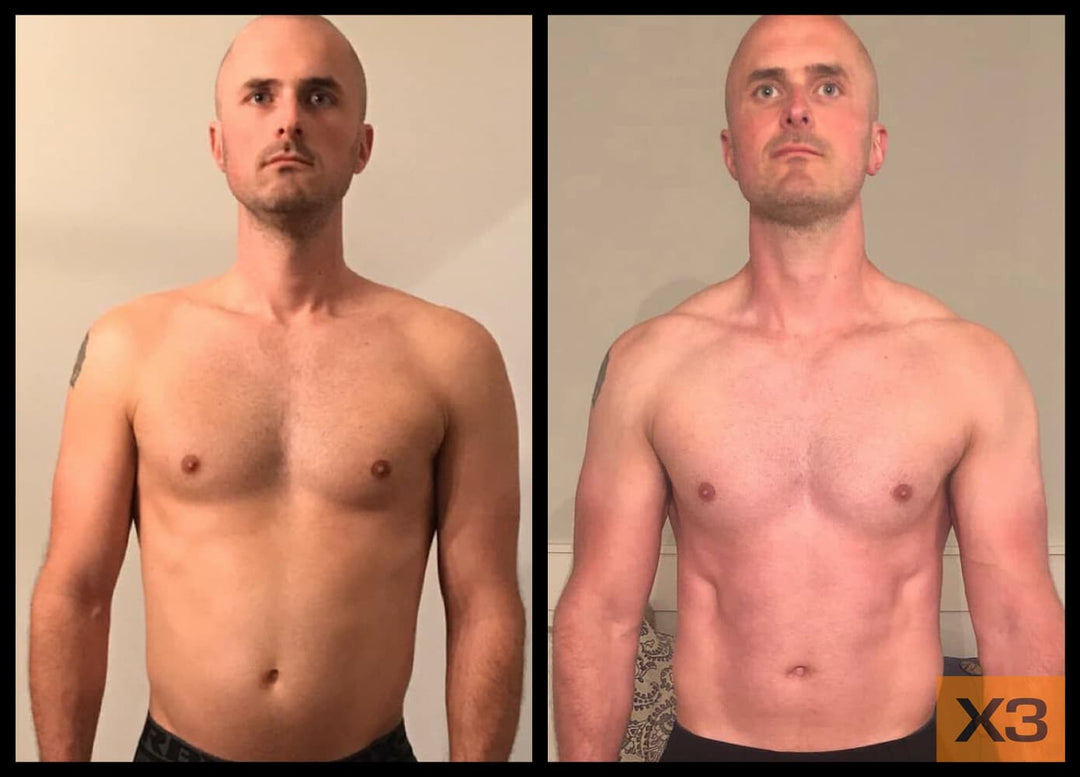
Michael Patterson
“In 90 days, worked through a few lingering injuries, lost 13 lbs of fat, and gained 18 lbs of muscle, and still gaining. Since watching my transformation, 4 of my friends have purchased X3s as well. Super happy with this thing!”
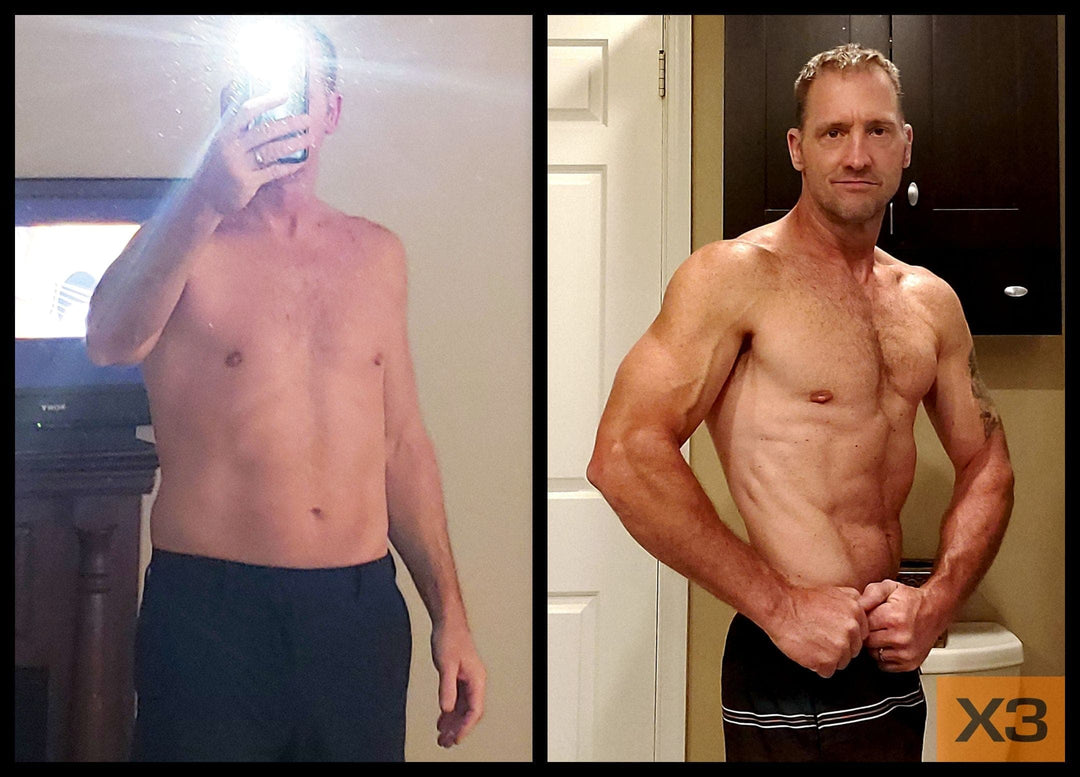
Thomas Kilcullen
“6 months with X3 only, and I look and feel completely different. Never going back to weights.”
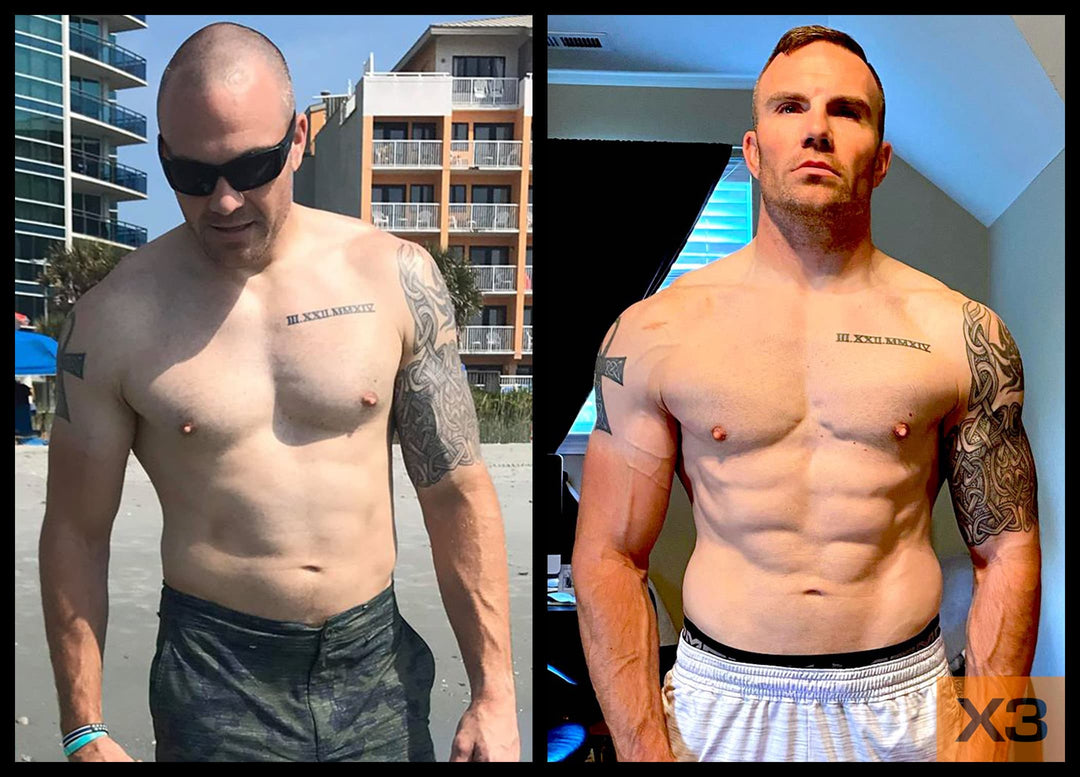
Bill Broadway
“I swapped over 20 lbs of body fat for lean muscle in 12 weeks using X3 ONLY. My advice for others, follow the program to the letter. Do NOT deviate, and don’t add other stuff. Dr. J did this right.”
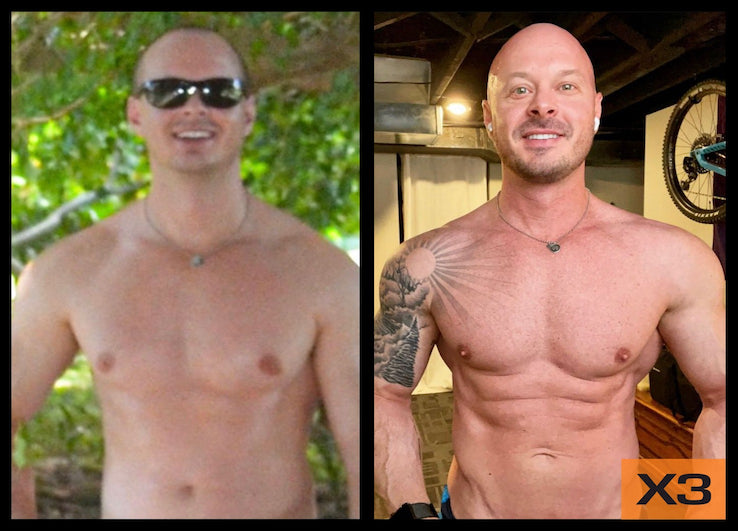
Brett Delaney
“My X3 is literally my favorite thing I own. In 9 months, I increased lung capacity, dropped 9 pounds of body fat, and added over 22 pounds of muscle. I’m now sitting comfortably around 9-10% body fat.”
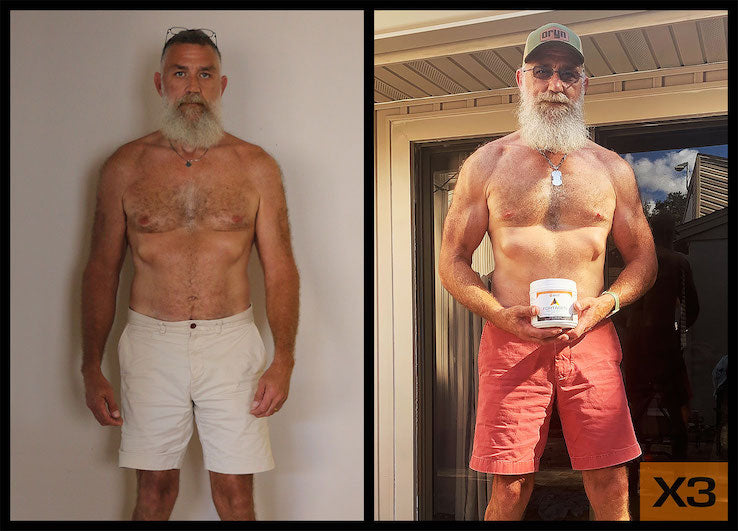
Sean Williams
“In two months, I have seen fat loss, muscle gains, and definition. I love the accessibility of the product. My wife loves it too and she is also happy with her results. Adding to that, it has helped me in my job because it involves heavy lifting. The little time invested has yielded INCREDIBLE results!”

Sherry Waldman
“8 months of X3 and I have almost doubled my strength in every movement. My results are incredible.”
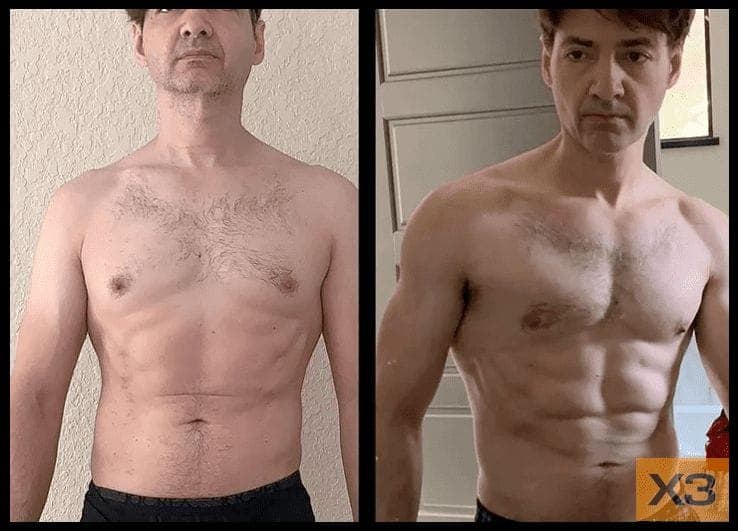
Maykell Lorenzo
“I received greater gains from X3 in 11 weeks than in 20 years of lifting. I owned $10k of exercise equipment and sold it all now that I have my X3. Best device EVER for gaining muscle and losing body fat.”
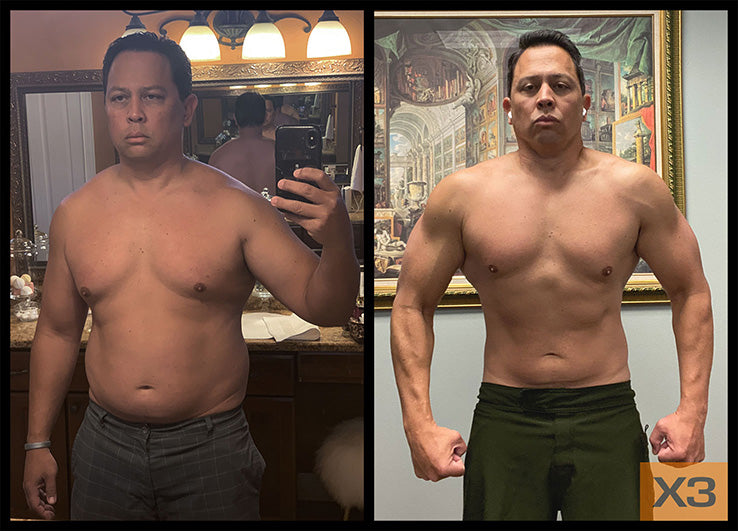
Rey Descalso
“With weights, each injury meant 3 to 4 weeks of no exercise and reversal of any progress. I've had no injuries using the X3 even though the intensity of my workouts has increased exponentially. I used to walk around at 210. Now I'm 195. I can't believe how good my body looks and feels. More muscular, more vascular, more flexible, and looking forward to the next x3 workout.”

Raj Jayarama, MD
“I am a physician and not only have my results been incredible, but I recommend X3 to my patients as well.”
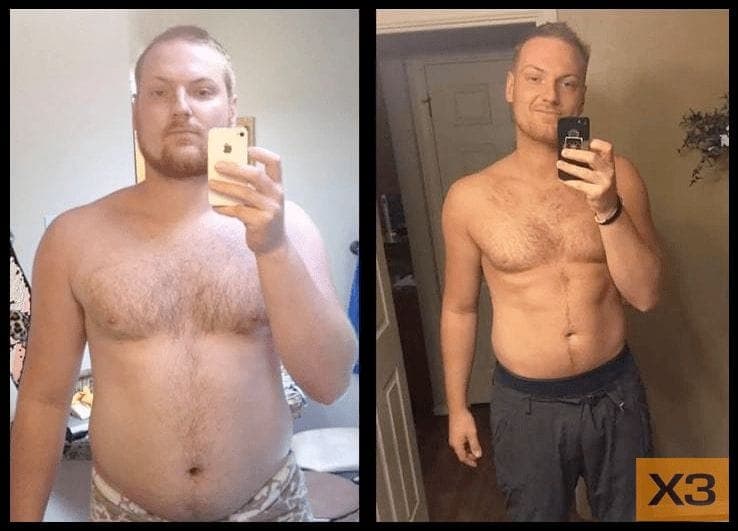
Greg Williams
“I've been noticing some pretty drastic results after only a month of X3. Before using the X3, I weighed about 270 lbs. After a month of using it, I weigh 235 lbs Feeling pretty good so far.”
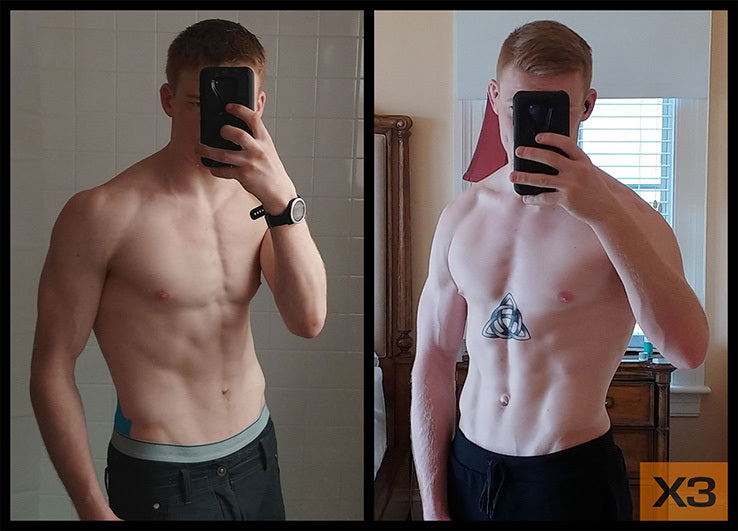
Stephen Heston
“I started X3 at 185 lb and between 12-15% body fat. I am currently at 190 lb and between 7-9% body fat. What I found remarkable about the X3 is that I was able to add pounds of muscle mass while my body fat % saw a steady decrease. All while training MMA full time. When I was hitting the gym to lift weights, I never saw results like that. I use X3 right before I work a heavy bag, and it's made a BIG difference in strength and performance.”

Bob Olsen
“I've pole vaulted my entire life, competed internationally, qualified for the 1980 Olympic Trials, and achieved a best vault of 17' 8.5". Due to two rotator cuff surgeries, I relied on exercise bands, but they offered limited workouts. At 65, I discovered X3, allowing me to strength train without risking injury. Over the last two years of using X3 as my only resistance training source, I improved my strength, and now, thanks to X3, I'm the USA Track & Field National Masters Champion in the pole vault for ages 65–69.”
